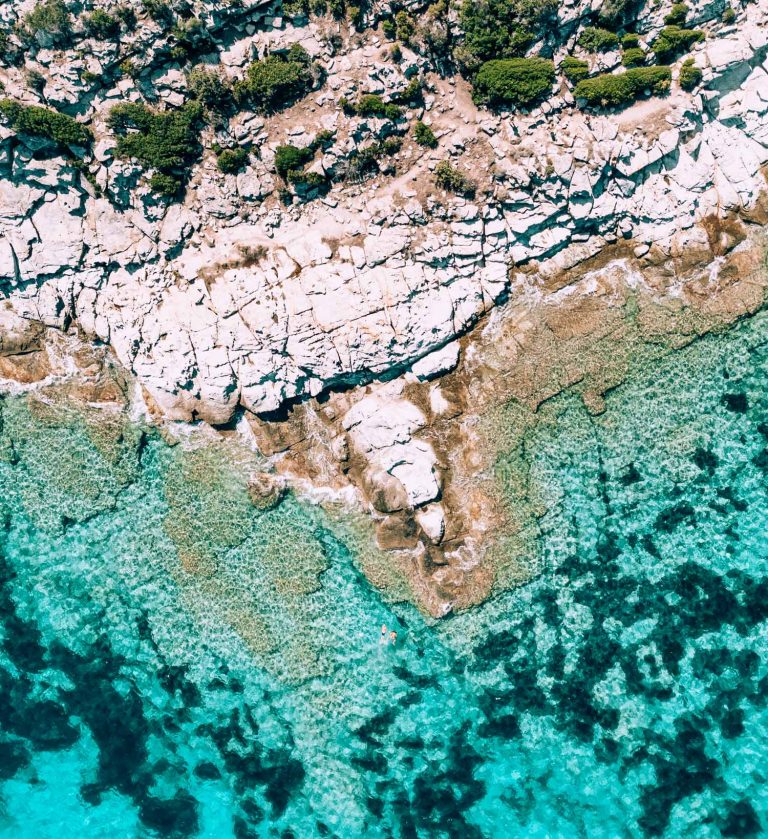While Corsica is a small island, there are a ton of things to see, do and taste. Crafting a Corsica itinerary can therefore feel challenging and overwhelming. Should you stick to the highlights? Hit up all of the spectacular beaches? Stay in the mountains and discover the island’s different terrains? Or only explore its vast history?
Well, with this Corsica itinerary can do it all! This is the exact route I would take when visiting Corsica for the first time, while hitting up some hidden gems along the way as well. With hiking, cities, beaches, food experiences and the best places to stay for each leg of the journey all packed into a little over two weeks, this itinerary is perfect when wanting to do it all or when traveling with a mixed group of people.
Tip! Visited West Corsica before? Consider East Corsica for your next trip.
Of course, you can be as free as you want with this Corsica itinerary, adding a couple of days here and there to slow down your travels. This route could easily cover three weeks as well, depending on which destinations speak to you the most. However, if you are a hiker and would love to stick to the mountains, I suggest doing the GR20, Europe’s toughest mountain trail. If you are a wine connoisseur, on the other hand, I would recommend reading my Corsica wine tasting guide, where multiple destinations mentioned below are discussed for their unique wine culture.
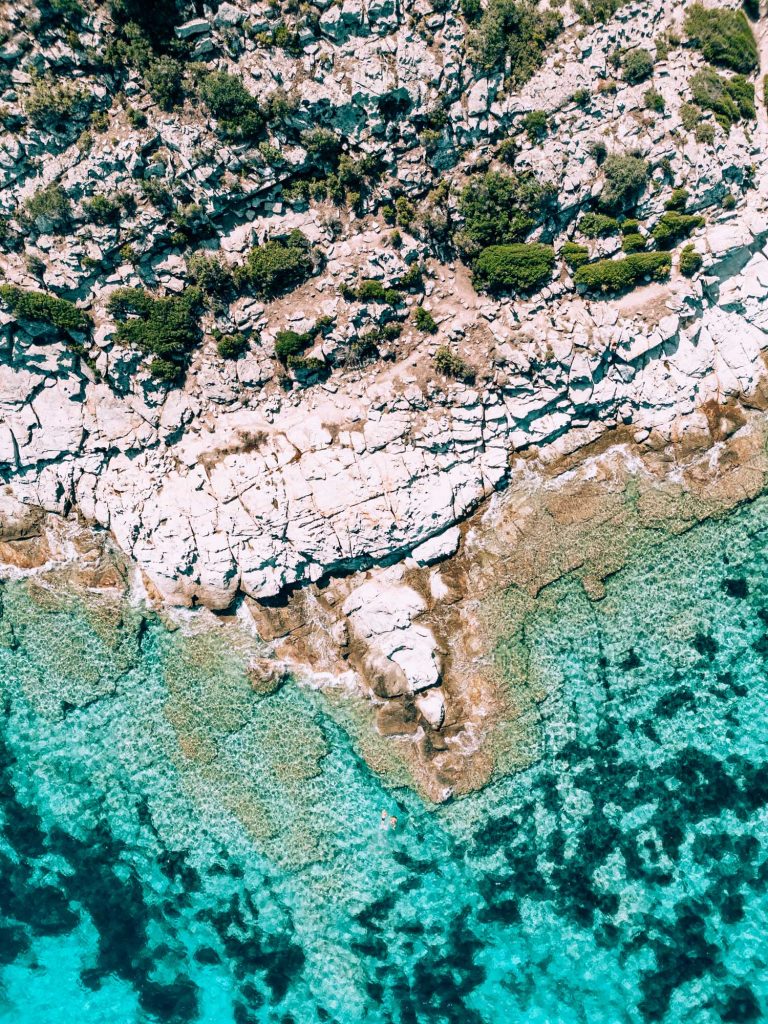

Best Time to Visit Corsica
Generally, Corsica is a summer destination. With hot sunny days it is the ideal place to relax by the beach, explore mediterranean towns and have delicious seafood. Whether peak seasons is the best time to visit for you, however, completely depends on the purpose of your travels.
If your aim is to go hiking as often as possible, or do other mountain sports, late June to August is the best time to visit. While some people might argue the shoulder seasons are better for hiking due to the lower temperatures, I would argue against is, as the weather tends to be a lot fickler. Think crazy thunderstorms that come out of nowhere and trails that turn into mudslides. Furthermore, some passages can only be climbed with crampons and ice axes in May, due to late snow and frost.
If you want to avoid the crowds, however, just want to do one or two shorter hikes and explore Corsica’s beaches and towns, then the shoulder seasons are the best time to go. Think of May, June, September and October, with especially September being a good period. During that final summer month, the ocean will still be warm, and the temperature will still allow you to wear shorts without sweating all day long.
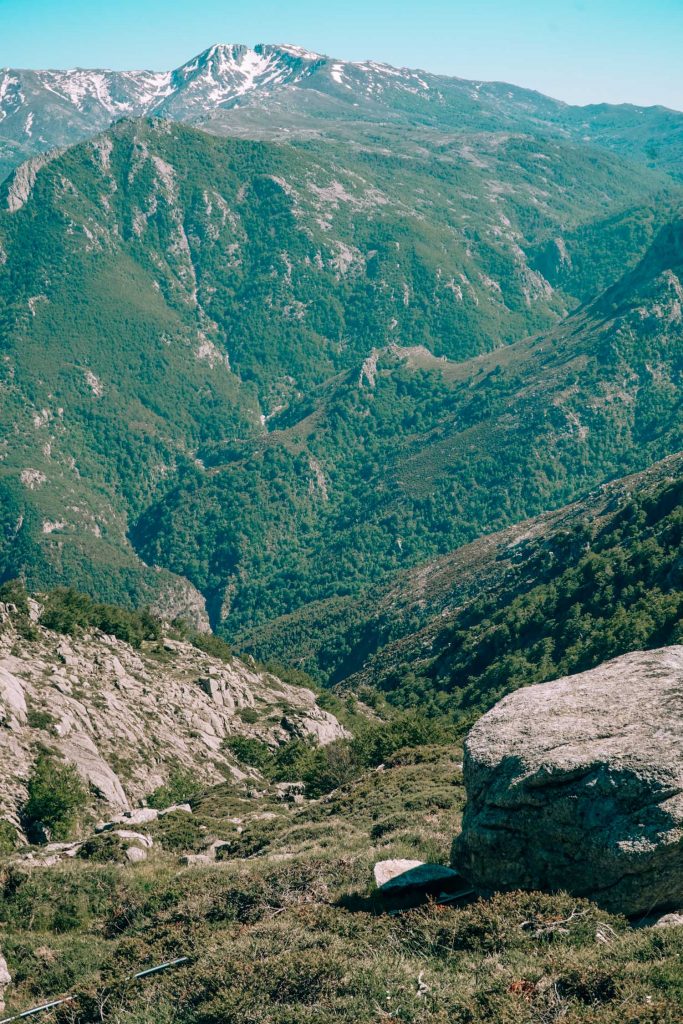
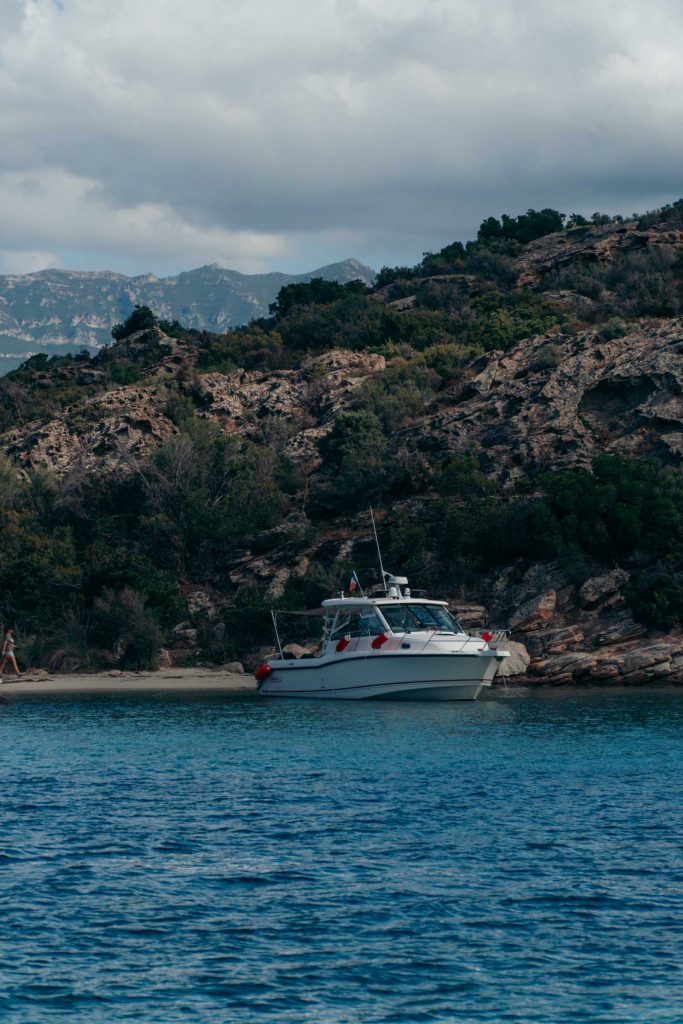
How to Get to Corsica
For this itinerary, the best option is to fly or sail into Bastia. You can of course swap things around, but Bastia offers the most connections. As a major port, ferries arrive from Savona, Genua, Livorno and Piombino in Italy and Marseille, Toulon and Nice in France daily during the summer months, allowing you to take your car with you (which is much recommended). The main two ferry companies are Corsica Ferries and the Moby Lines, of which the latter is great to go on with kids. Find the best rates and routes here for your journey.
Tip! Extend your trip by booking a couple of nights in Italy before taking the ferry to Corsica.
Besides Bastia, you can also fly to Ajaccio, Calvi and Figari, from many airports in Europe. In order to find the cheapest flights, I recommend using Skyscanner, which is one of my favorite travel hacks. I especially love their flexible dates search option, which allows you to find the best rates possible. If you have specific dates, you can check them using the tool below.
How to Get Around Corsica
If you chose to go by ferry and bring your own car: perfect, you are going to need it. While there is one train line – the U Trinighellu (small train) that runs between Ajaccio and Bastia – and a couple of bus routes, public transport is limited and often inconsistent. Furthermore, many hidden gems and trail heads on the island are unreachable by public transport anyway.
Renting a car when you did not bring your own is therefore a must. I always use DiscoverCars to research where I can find the best rates and car for my needs. For driving on Corsica, I recommend renting an automatic vehicle, as roads tend to be steep and narrow, with lots of switchbacks the further you drive into the mountains. If you are a confident manual driver, however, you have got nothing to worry about and save those euros for other experiences.
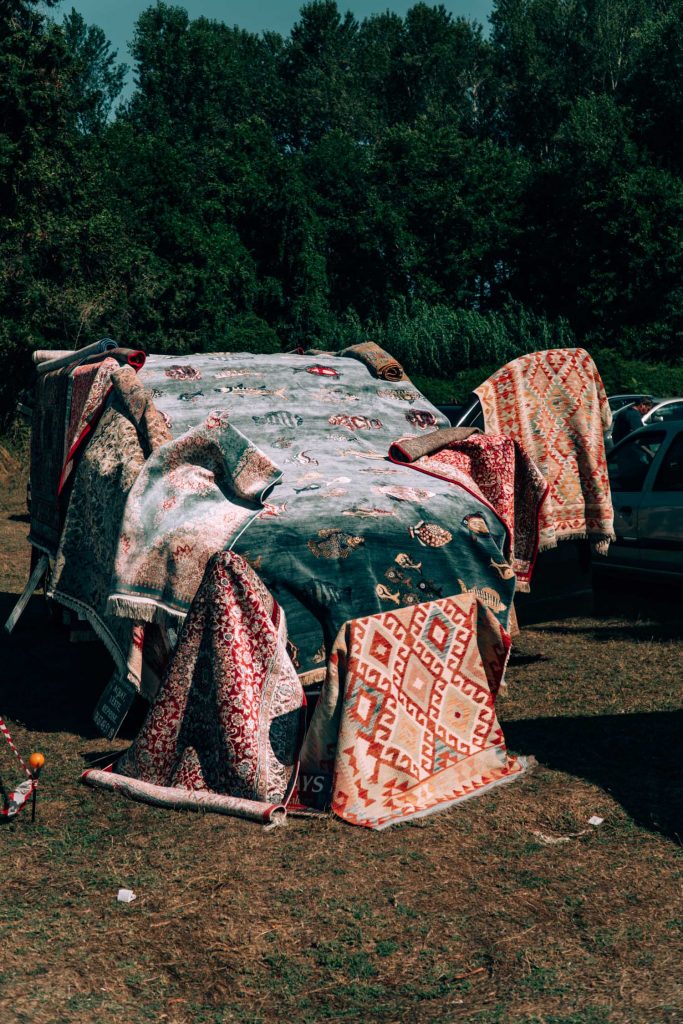
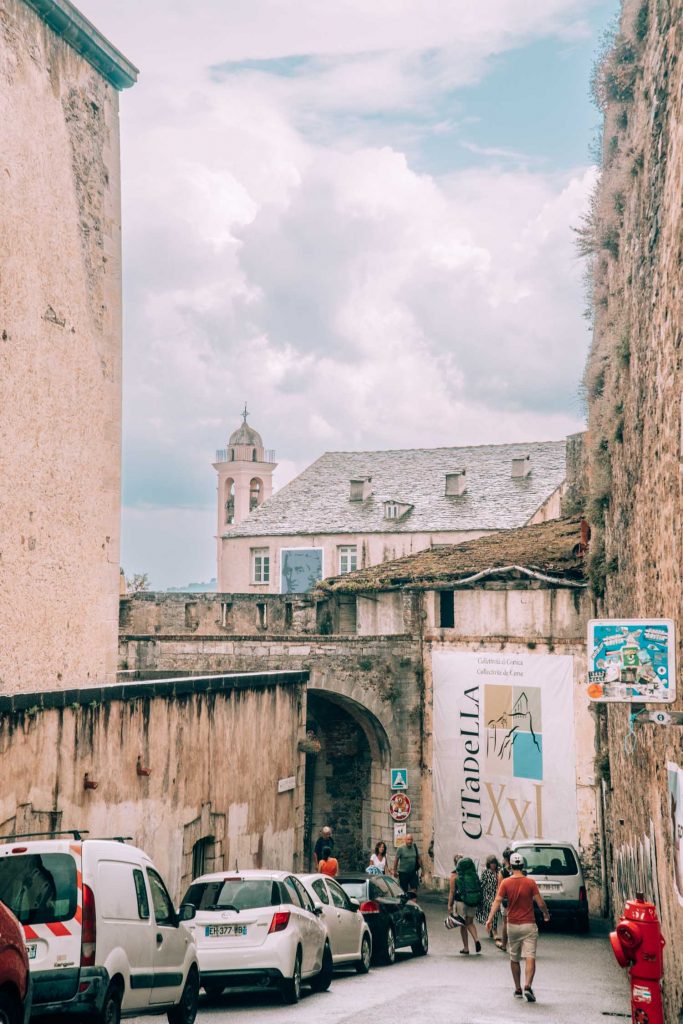
My Favorite Places to Stay on a Corsica Roadtrip
There are three specific hotels I have mentioned in my East Corsica travel guide, my gluten free Corsica guide and my wine tasting guide, and I need to mention them here again – they are just that good! In beautiful Corte you will find Dominique Colonna, a hotel that incorporates a love for nature into their design. Besides beautiful rooms, they offer a heated pool, yoga and pilates lessons, and e-bike tours.
Heading up north to Saint-Florent, Hôtel la Dimora charms the hills of Saint-Florent. The former farmhouse combines Corsica’s rustic charm with quiet, down-to-earth luxury, just the way I like it. You can rent rooms here, or an entire villa, and enjoy fabulous dinners or relaxing massages any time of day.
Finally, to the south on the outskirts of Porto-Vecchio, you can spot Domaine de Casanghjulina. Its interior is a mix of the first two hotels (stunning), but its exterior takes the cake! You can choose to sleep in a treehouse and bathe under the canopy of the trees’ branches in their outdoor bath. With a view of the forests around the city, this is the perfect place to relax after a lot of exploring.
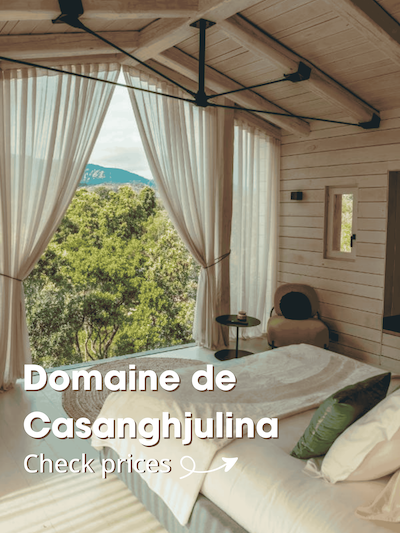
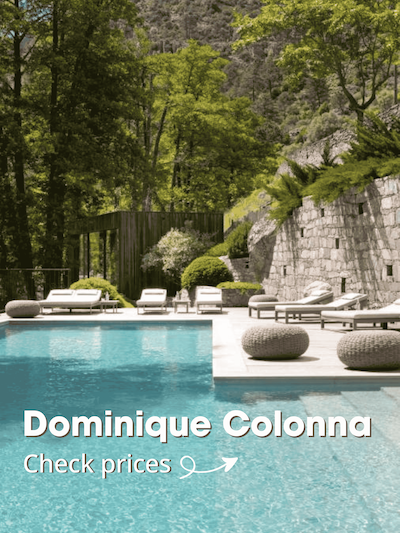
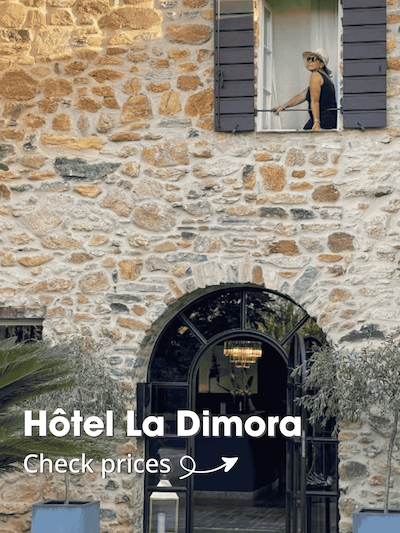
3 Week Corsica Itinerary
This 3-week Corsica itinerary is jam-packed with the best activities, sights and hotels in each destination. Circling around the island from the North to the West, to the South and ending East, you will get to see many of Corsica’s facets. Including mountain sports, beach days, history and food, every type of traveler will have something to do here. Something to note before diving in, however, is that this Corsica itinerary includes a lot of moving around. While I will be giving you hotel options for every stop, feel free to pick a handful of places to do daytrips from. This way, you will not have to repack your suitcase every day.
Day 1: Cap Corse
Before heading to the gorgeous beaches which you might have seen online, the first stop on your Corsica itinerary will be the rugged landscape of Cap Corse. This region is the thin sliver of land that forms the island’s most northern part and is a tapestry of Genoese towers, low shrubs, steep cliffs, charming fishing villages and vineyards: yes, Cap Corse is one of the island’s wine regions as well!
Take your time driving around the tip and hit up a couple of villages along the way. Erbalunga is one of the major highlights on this tour. From its white houses on the edge of the water to its neighboring Genoese Torra d’Erbalunga, here you can experience Corsica’s fishing culture. And while seafood tends to be super delicious here, you should drive up north to Centuri to catch fishermen hauling in their wares. With pastel houses harboring numerous restaurants, this village is the perfect place to eat fresh lobster. Before heading further south, visit Cannelle, the village overlooking Centuri and thus the perfect place for some vacation pics.
Tip! If you are short on time, you can also do a boat tour of Cap Corse from Calvi or l’Île Rousse.
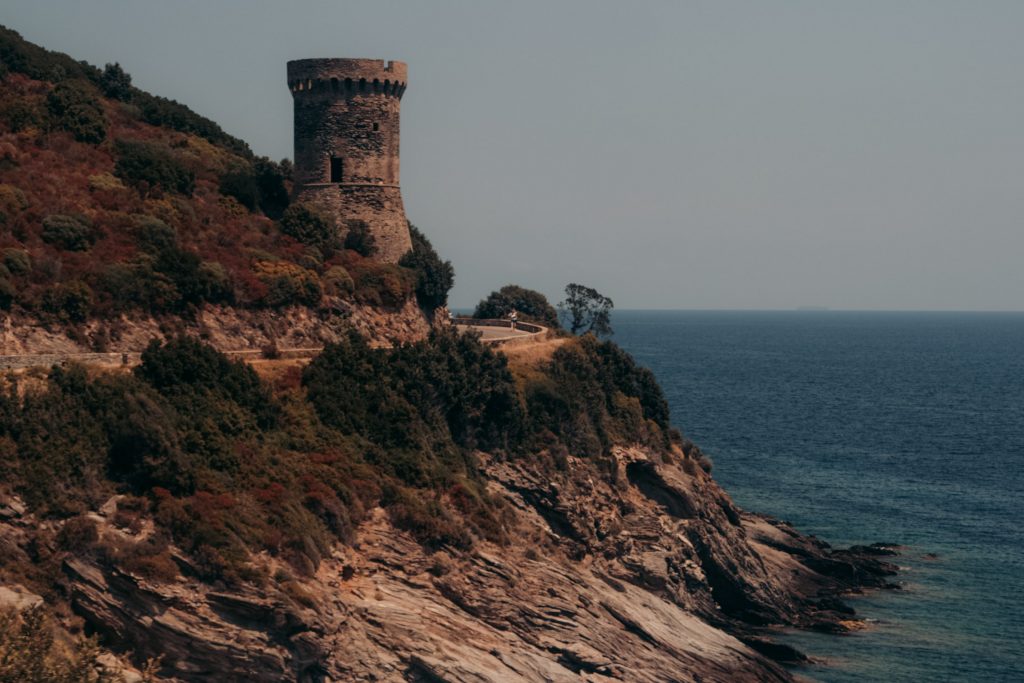
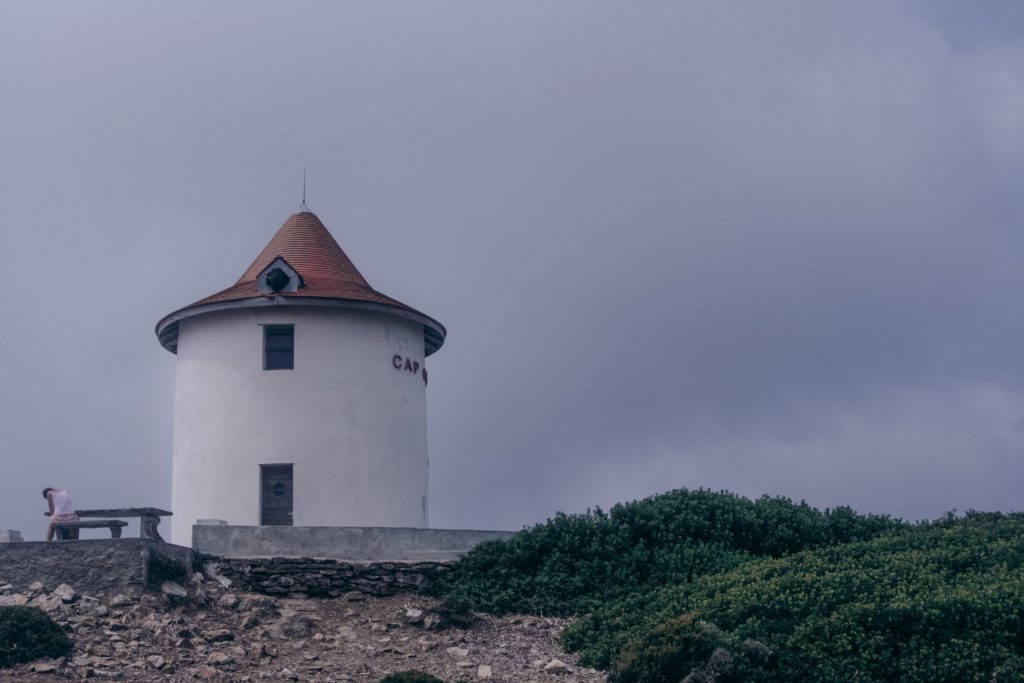
Close to your destination of the following day, you will find Nonza perched on the hills overlooking the sea. The Western coast of Cap Corse mostly exists of steep cliffs, with the black beach called Plage de Nonza being a major sight and popular destination for a beach day. Do not forget to take a look at Nonza’s Castle of Sassa or the San Francescu Monastery to learn more about Corsica’s medieval history.
For those more interested in hiking, I recommend two treks. The Sentier des Doaniers hiking trail leads you along the route which was meant for catching smugglers trying to import their forbidden goods. The other popular route leads you up to the Monte Stello, Cap Corse’s highest mountain with an elevation of 1307 meters.
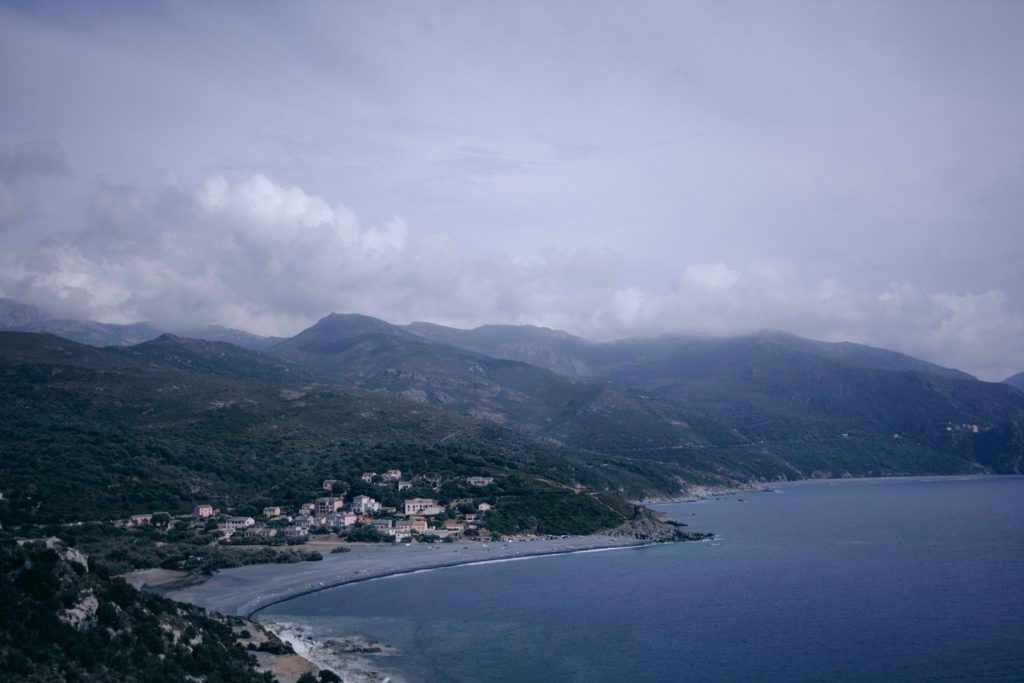
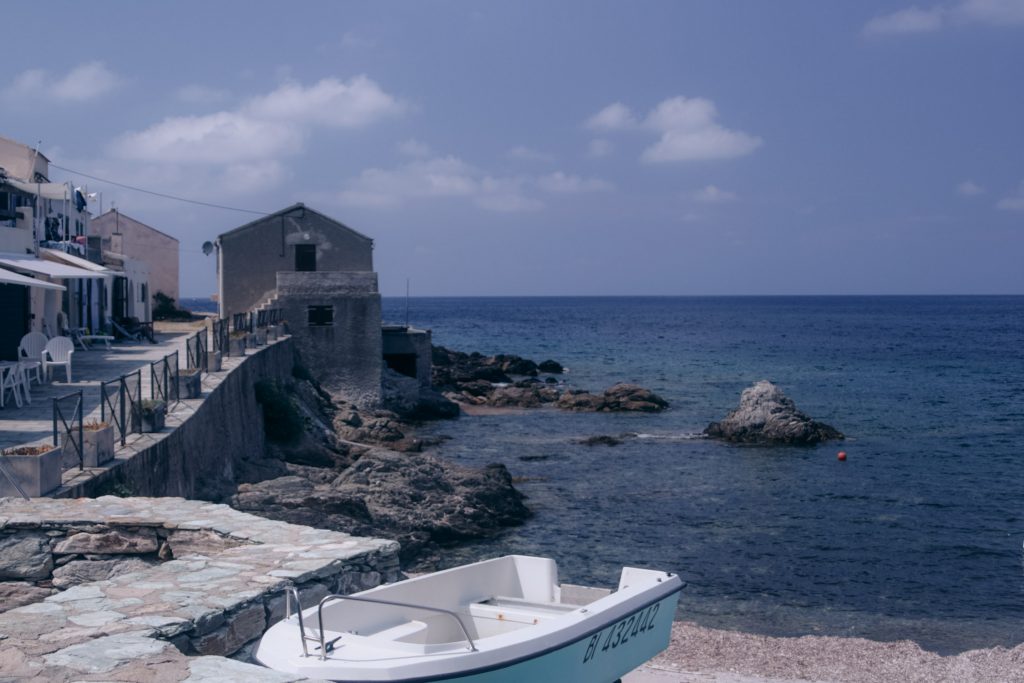
Where to Stay in Cap Corse
Cap Corse is full of different types of accommodation, making sure every traveler’s needs are taken care of. For the luxury traveler, we have the resort Misincu, with an amazing pool and gorgeous rooms straight out of a White Lotus episode. But if you prefer to keep it budget-friendly I would recommend staying at U Sant’Agnellu in the medieval village of Rogliano, where the rooms look out over the mountains and the see. Prefer to have your lobster for dinner instead of lunch? Then you must stay at Hôtel de la Jetée.

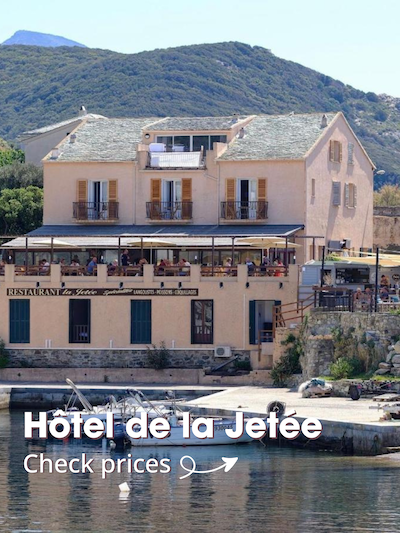

Day 2: Stay in Saint-Florent and visit the Desert des Agriates sailing or hiking
Your next sleep will be in the gorgeous town of Saint-Florent, also known as the Saint Tropez of Corsica. With glamorous shops, amazing restaurants and the most gorgeous bay, this town breathes ‘European summer vibes.’ But before you explore the town itself, you should visit the nature reserve Desert des Agriates.
These hills covered in wild maquis used to be farmland that fed a large part of the island. Now, it is a protected nature park which you can visit by foot, sailboat or 4WD. There are multiple hikes in the area: you could hop on a boat to one of the beaches and then hike for an hour or two to the other beaches of the area, or choose to do a multi-day hike of 35 kilometers that leads you through the reserve. Along the way, you can stay in old farmer’s huts where you can find running water and bunk beds.
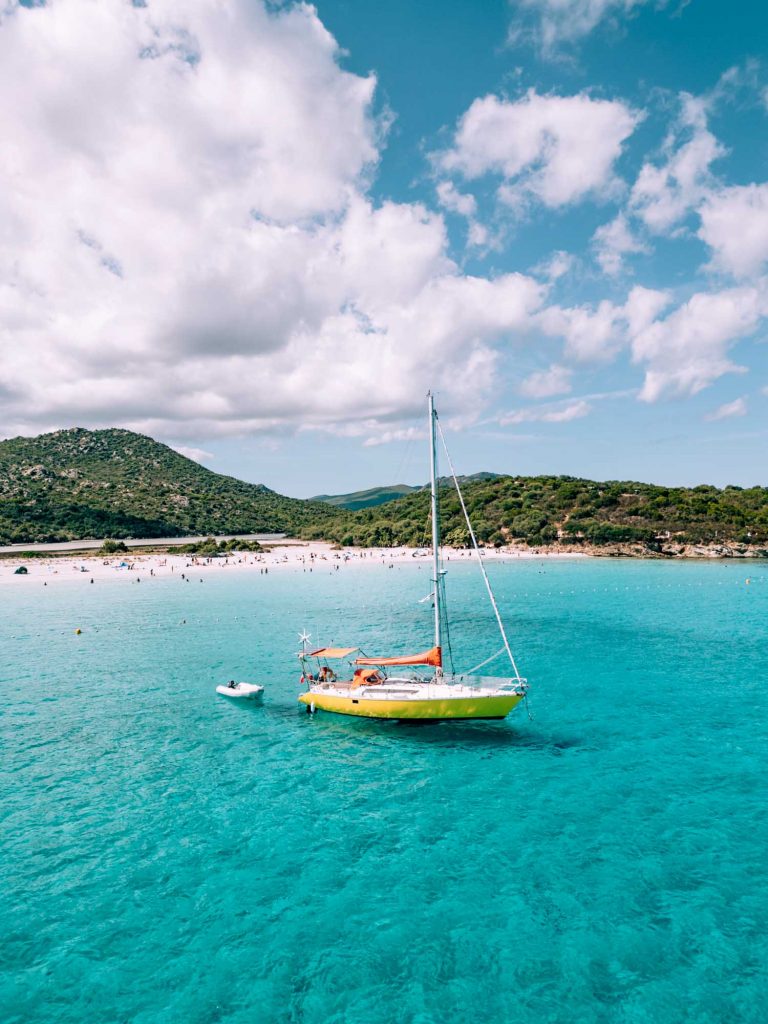
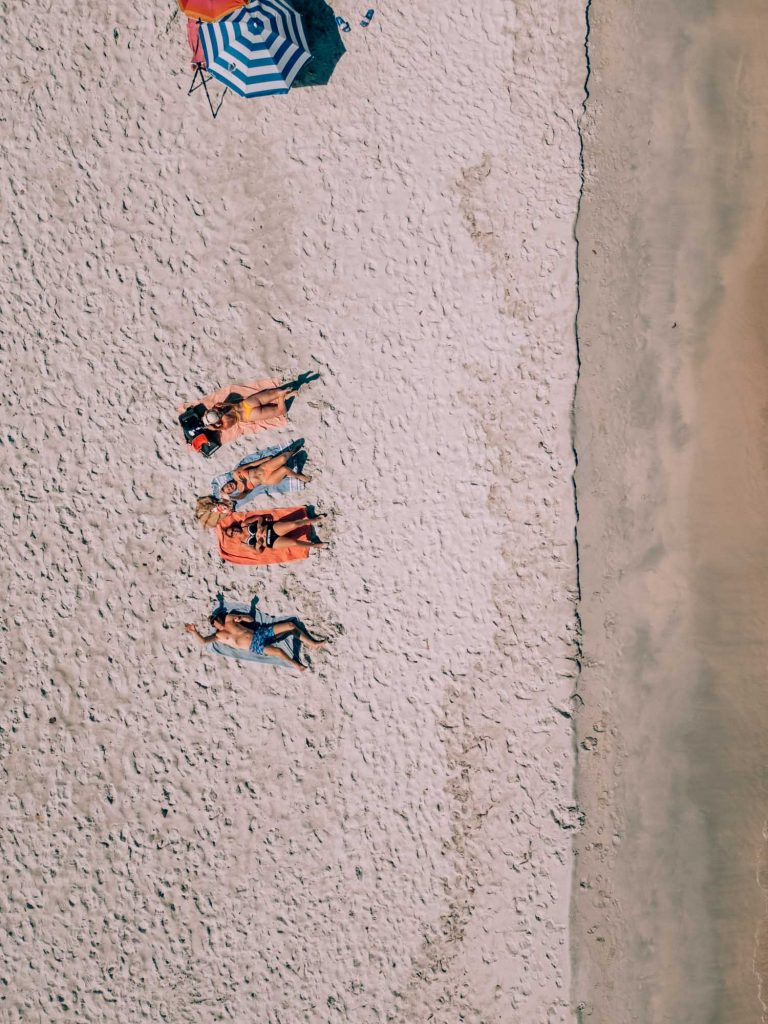
We visited the Desert des Agriates by sailboat with Sailingmaures. They picked us up at the harbor and sailed us and their adorable dog Tixie to the Plage du Lotu and Saleccia. Along the way they served rosé and snacks and stopped for snorkeling in the crystal-clear waters. The company is owned by a young couple who were saving up to sail around the world, so, besides the excellent day you will have, support them in their goals by booking a tour with them.
If you want to experience the nature of the Desert des Agriates, but are not that into hiking, then you could also book a 4WD jeep tour of the area. While you are there, visit the Parc de Saleccia as well, which has an amazing restaurant serving seasonal Corsican food.
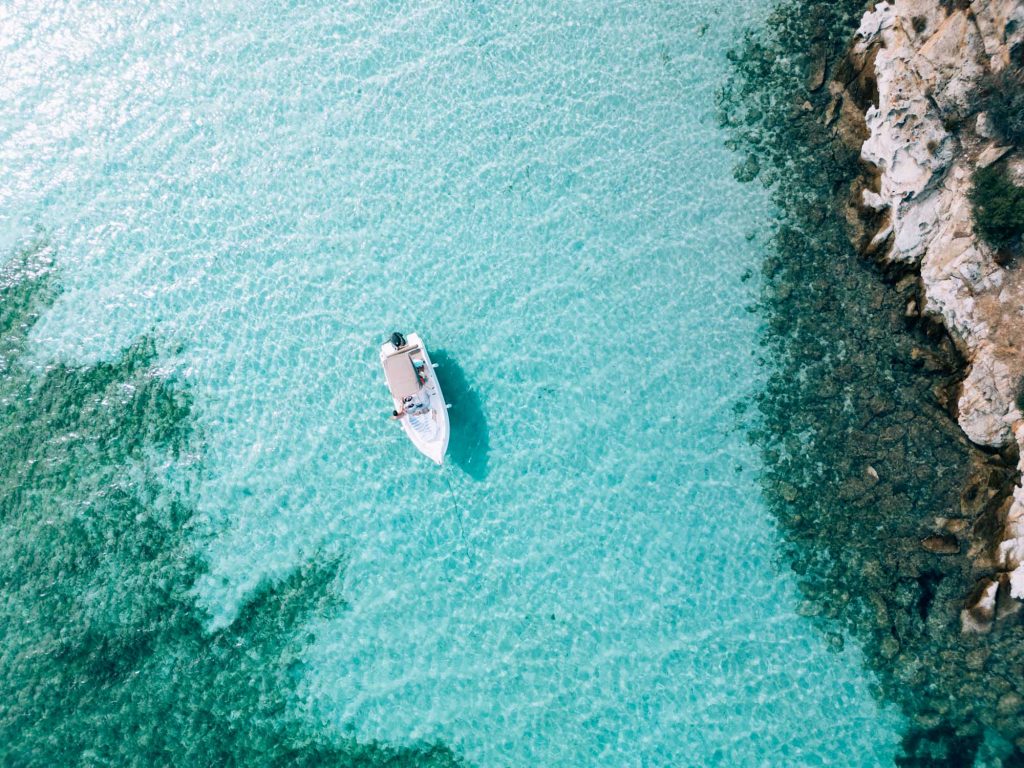
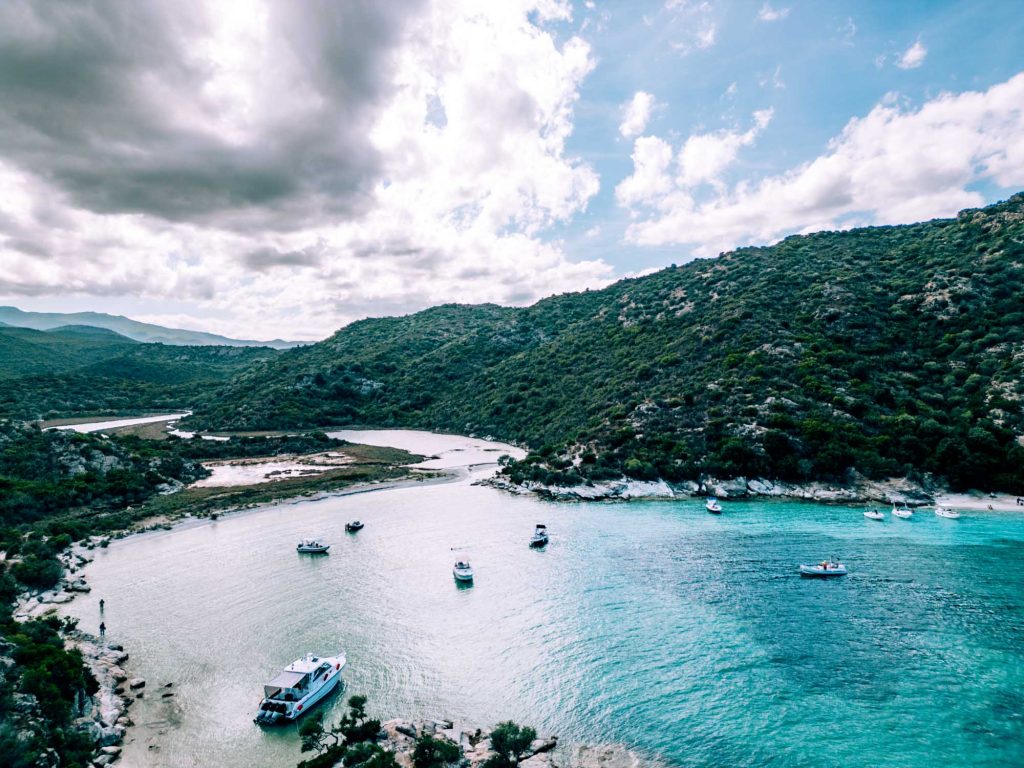
Where to Stay in Saint-Florent
One of the best places to stay on Corsica is located in Saint-Florent and I have mentioned it before, namely: Hôtel la Dimora. However, this piece of luxury is perched on the hills surrounding Saint-Florent, so if you prefer to stay within the city itself, I recommend Hôtel & Résidence San Roccu. If you prefer to save your money and spend it on other things, you could consider the budget-friendly Hôtel Sole e Mare.

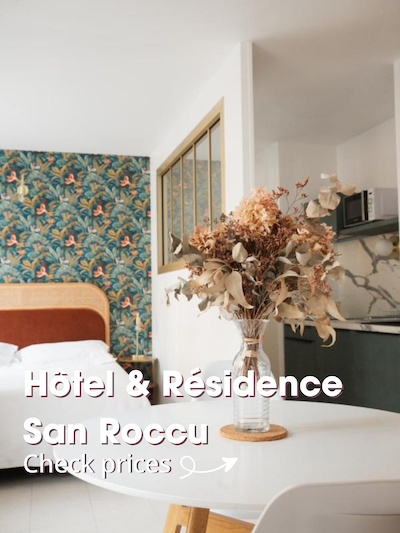

Day 3: Saint-Florent and Patrimonio Wine Tasting
On the third day of this Corsica itinerary, you will be exploring Saint-Florent and the surrounding wine region of Patrimonio. The village itself is quite small, but you should spend some time exploring the Romanesque Nebbio Cathedral overlooking the city, and the Genoese Citadel, which dominates the cityscape. Afterwards, check out the fashionable shops or visit a sea-view restaurant for lunch.
Tip! Turn your trip into a wine tasting tour, using my Corsica wine tasting guide.
In the afternoon you could choose to relax by the water, or spend your time at one of the area’s vineyards. The area around Saint-Florent is also known as the Patrimonio appellation, which is one of the island’s oldest wine regions. In and around the village of Patrimonio you can find many vineyards, but Saint-Florent has a couple as well. Check out my wine tasting guide to Corsica to see a list of my favorites! Or just book a wine tasting including a vineyard tour, to make it a little easier.
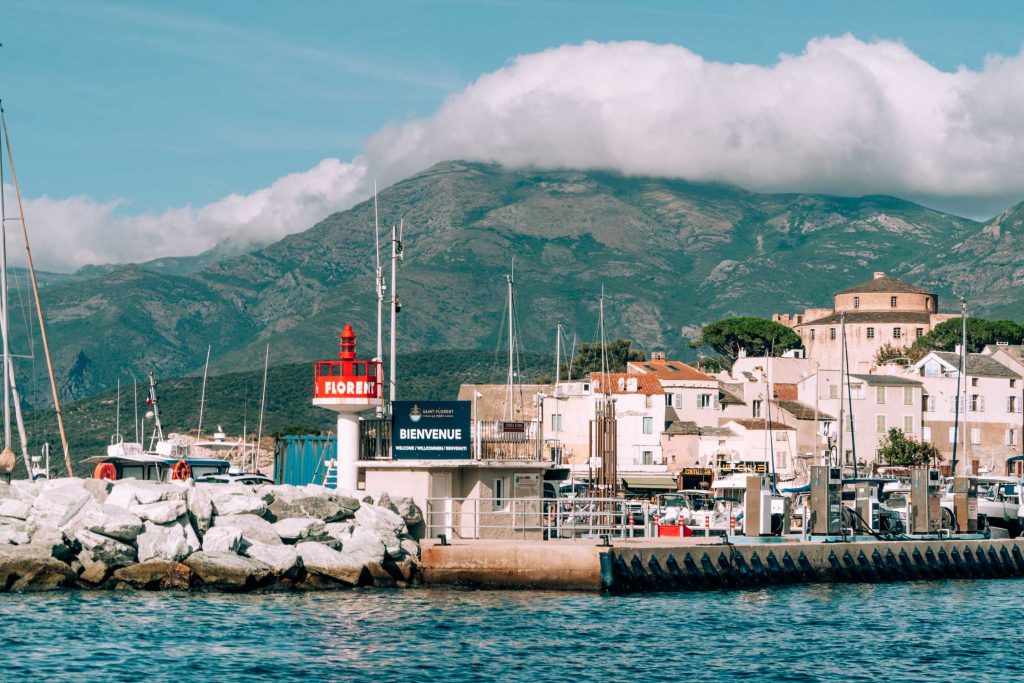
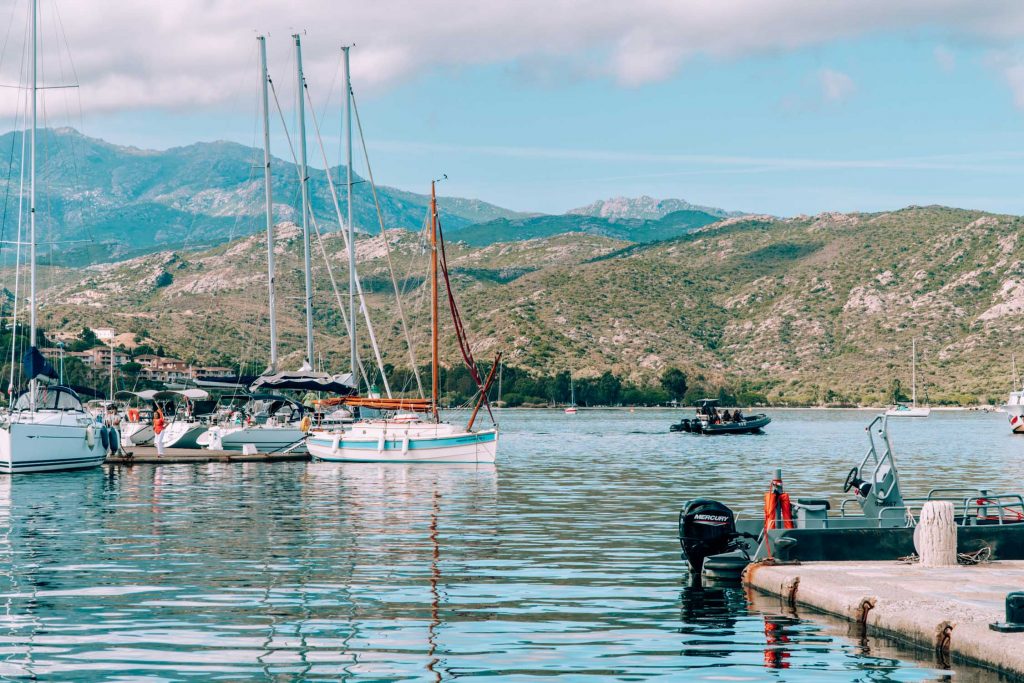
Day 4: l’Île-Rousse boat trip
Before heading to one of the island’s major cities, you will want to explore l’Île-Rousse. This charming city in the North of Corsica is mainly known for its russet cliffs protruding from the water, but the town itself is worth a visit too. With cute cafés, shops and ice-cream stalls against a backdrop of charming brick homes, it is the perfect Mediterranean town to take a stroll in on a hot day.
While you must explore the city itself, you should also not miss the gorgeous cliffs of l’Île-Rousse. One of the loveliest ways to see it all, is from the water. By booking a boat tour you not only get to see the thing that gives the city its name, but also get to swim, snorkel and enjoy the gorgeous mediterranean.
Another way to see the cliffs is to hike to the Île de la Pietra, which is attached to the mainland by a thin strip of land. On top of the cliffs overlooking the city and sea you find a white lighthouse, which provides you with the perfect spot to watch the sunset from.
Where to Stay in l’Île-Rousse
You can either spend the night in l’Île-Rousse, or drive to Calvi where you will be staying the next three nights. If you wish to stay in l’Île-Rousse, I recommend staying at Hôtel Casa Rossa & Spa. Located in a typical Corsican cottage, it is the perfect place to relax after a full day of exploring. Another great hotel with spa is Hotel La Pietra Restaurant & Spa, this time located on the Île de la Pietra itself. Prefer to stay in a quieter area with charm? Then consider staying at La Bergerie, on a ten minute drive form the city.
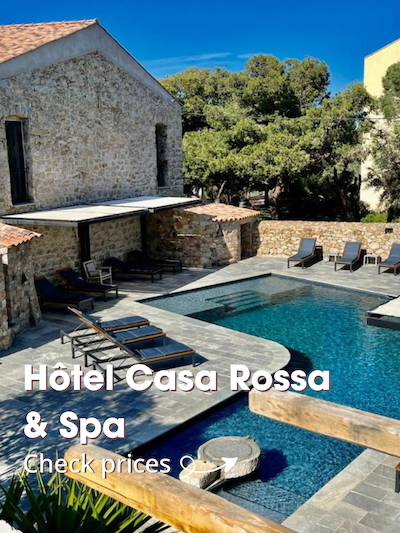
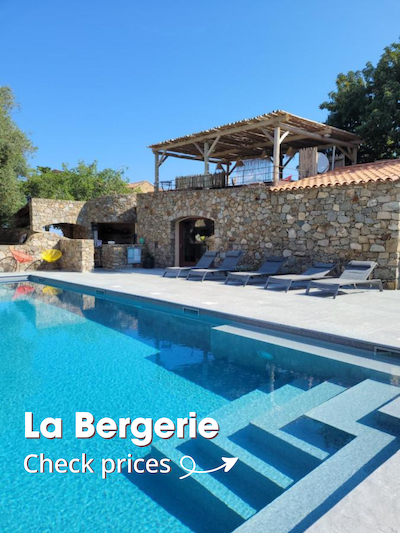
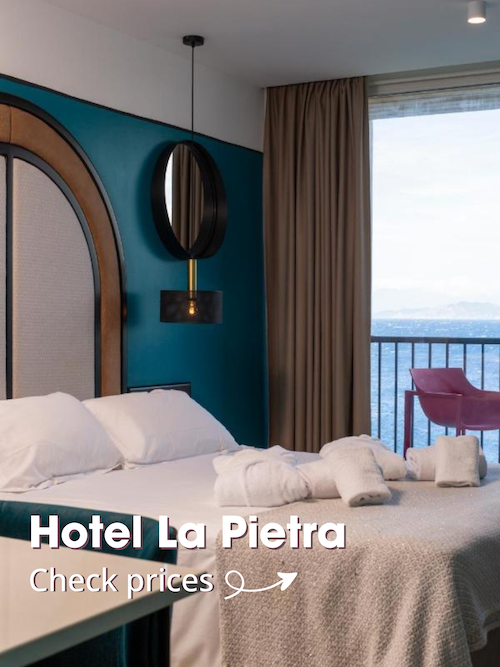
Day 5: Explore Calvi
Calvi is one of the bigger cities on the island and therefore should not be excluded from this Corsica itinerary. With an impressive citadel overlooking the ocean and the mountains, it is worth exploring for at least a day. While you could of course wander the city on your own, doing a guided city tour is the perfect way to discover Calvi’s extensive history.
After you have seen it all, you can either drive, cycle or hike your way up to the beautiful Notre Dame de la Serra. The trip to this chapel overlooking the bay of Calvi is said to be a blessing on any romantic relationship that makes it up there. Going solo? Then you can also hike up to the Capu di à Veta, Calvi’s highest hill which offers similar stunning sunset views.
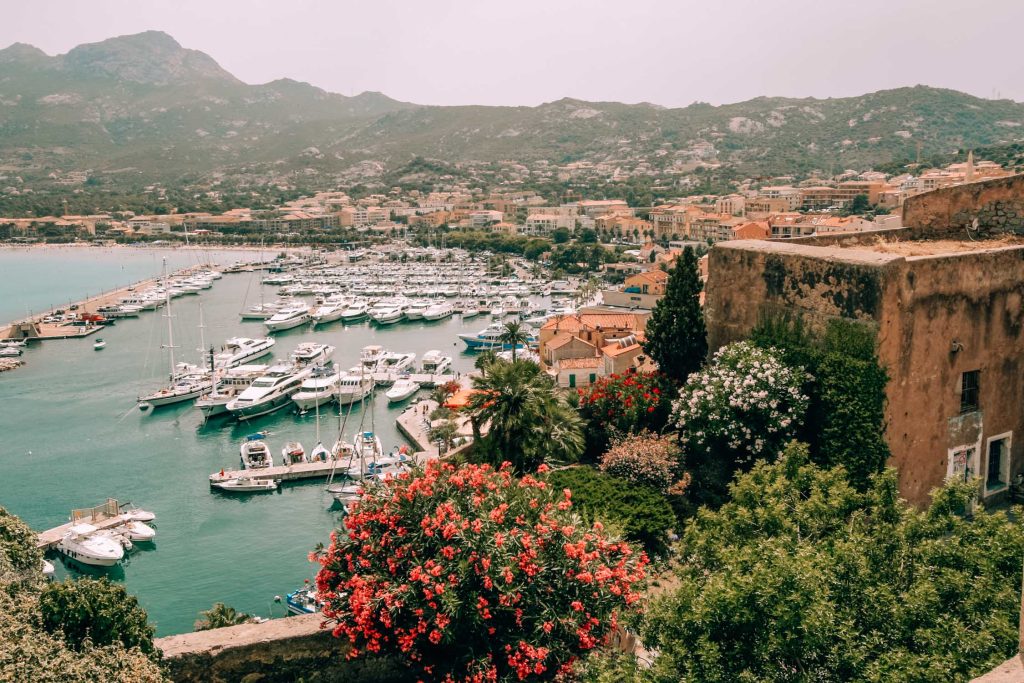
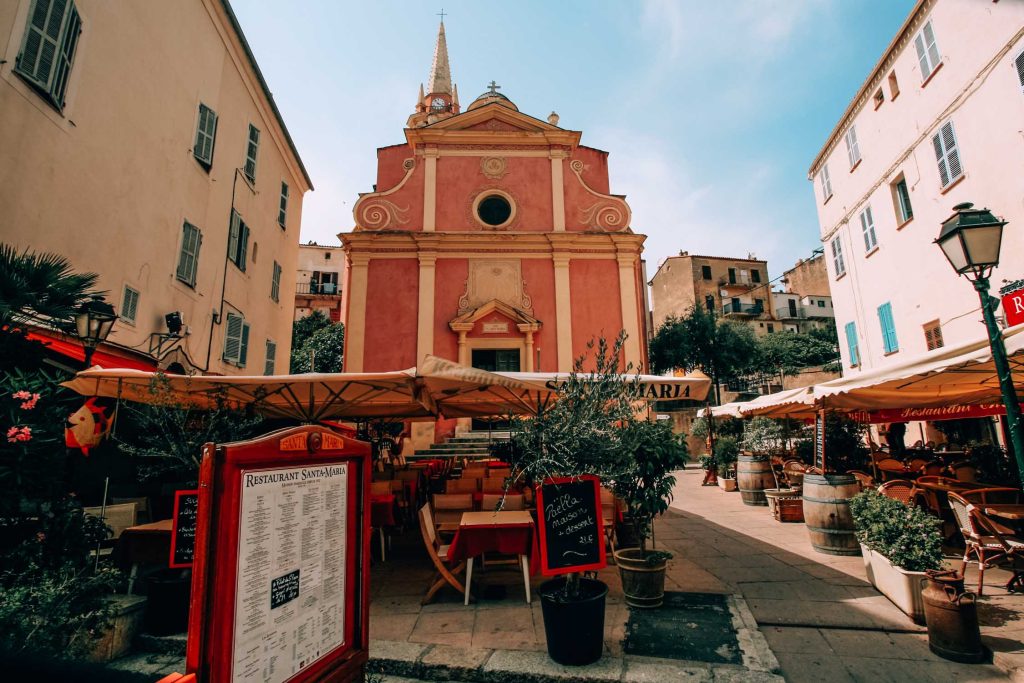
Prefer an afternoon of relaxing and soaking up the sun? Then head over to Calvi’s long sandy beach called Plage du Roncu, where you can swim in the turquoise waters, play beachball or just read a good book. You can also explore the ocean from underneath its surface, however, as Calvi is a great spot for booking a diving tour, or even getting your PADI.
My preferred way of exploring a place? That would be through its food and wine. As it were, Calvi is one of Corsica’s wine AOP’s, which is why there are plenty of wine tasting tours to do in the area. But you can definitely visit a vineyard on your own, using my ultimate wine tasting guide to Corsica, where I have listed some very special wineries.
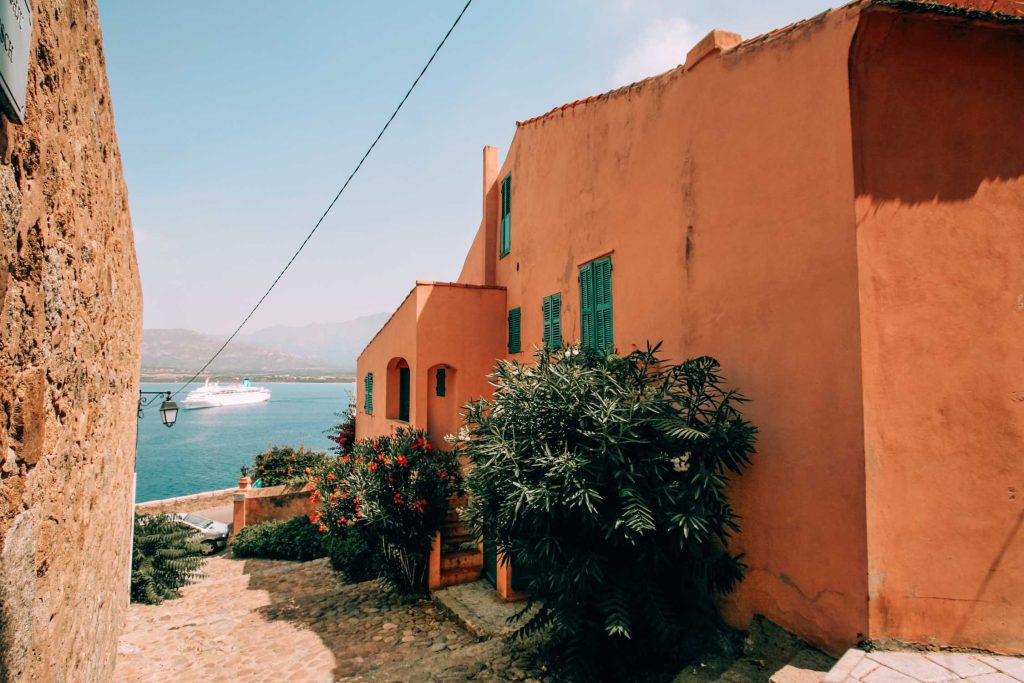
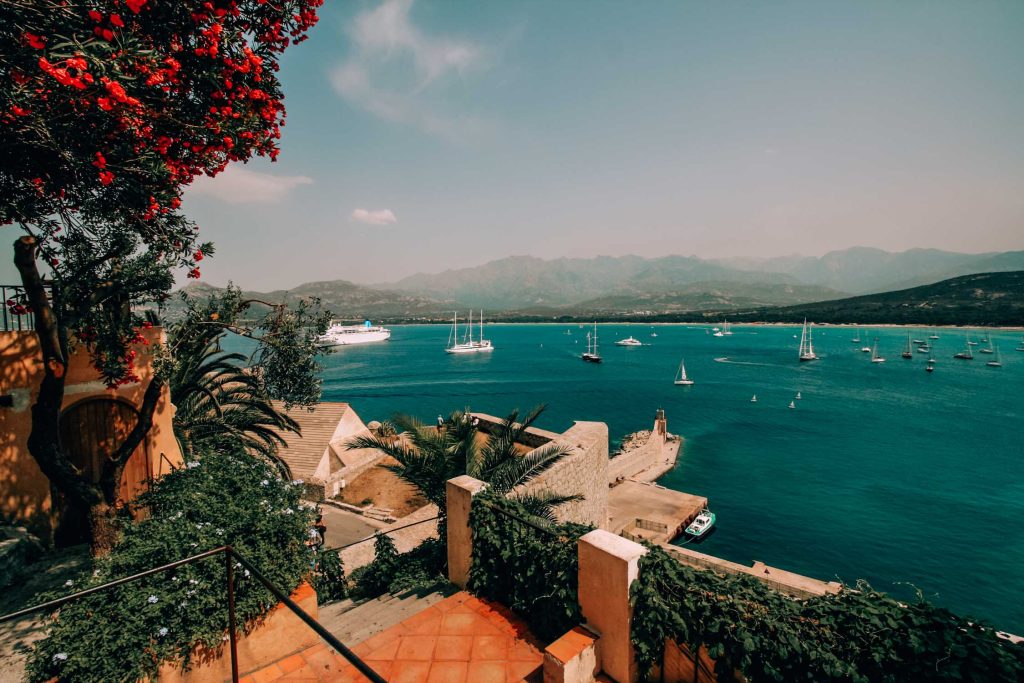
Where to Stay in Calvi
If you wish to stay within the city itself, I recommend Casa Santa, which offers you a cozy apartment where you can make your own breakfast and have your coffee on its quaint balcony. You can also opt to stay at a hotel in the new city, for which Hotel Balanea, with their classic rooms, would be a great choice. For the ultimate luxury lovers, I recommend the Hotel Corsica & Spa just outside of Corsica. Here, you can combine a day of exploration with a relaxing massage at the end of the day.
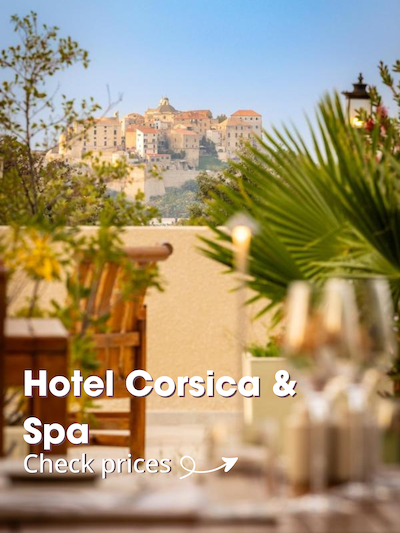
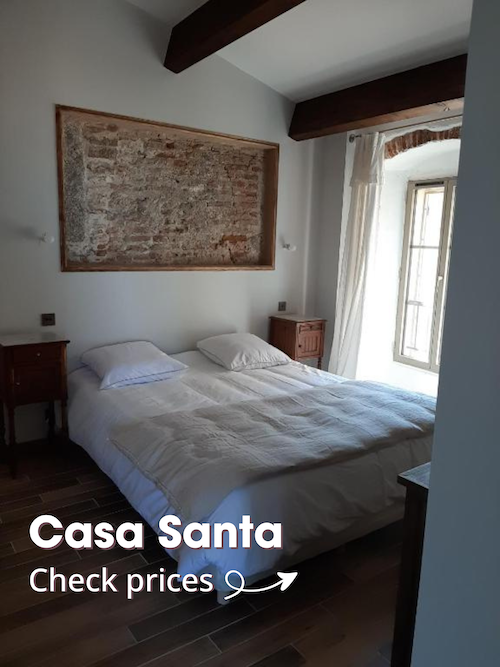
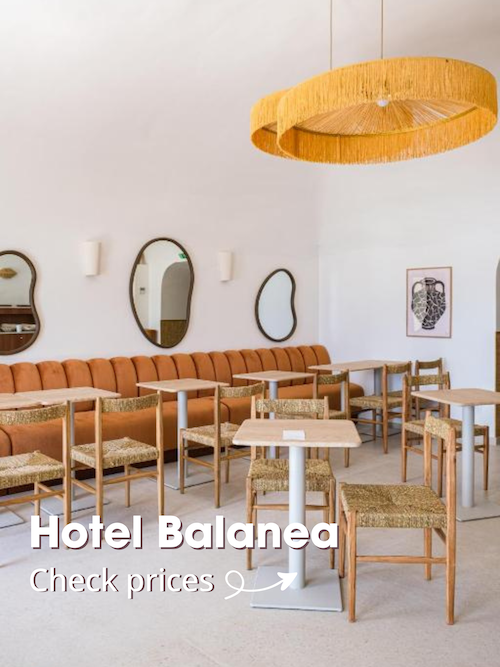
Day 6: Calanques de Piana
On your way to Ajaccio from Calvi, you must stop at the Calanques de Piana, which is one of Corsica’s UNESCO World Heritage Sites. With a landscape similar to that of l’Île-Rousse, but even more dramatic and extensive, just driving through these red cliffs is enough to awaken your sense of adventure.
While you can do numerous hikes through the nature reserve, like the Capo Rosso hiking trail, you can also book a boat tour that takes you past the cliffs and to numerous caves. A boat tour like this is perfect for when you want to relax but still go on an adventure. Think of snorkeling, visiting the Calanques’ beaches and visiting Torra di Turghju. Most of the tours leave from Cargèse, just as stunning as the town of Piana itself.
Where to Stay in Piana
Everywhere you stay in Piana, you will find terrific views of the Calanques. The cozy and luxurious Hotel Scandola has both rooms and a terrace overlooking the water and red cliffs, while the quaint Hôtel Capo Rosso even has a pool that does the very same. If you prefer a smaller hotel, however, with similar vistas, I would recommend staying at Hôtel Mare E Monti.
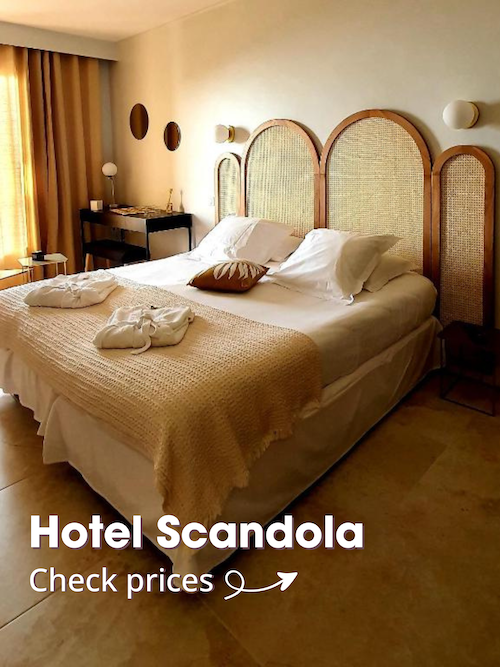
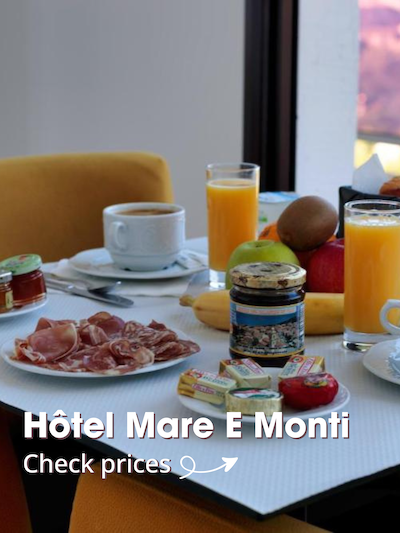
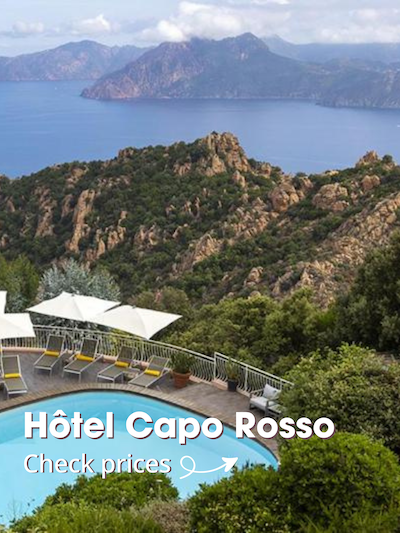
Day 7: Hike to Corsica’s Pozzines
The word pozzi or pozzine means well and refers to the one-of-a-kind landscape in Corsica’s mountains: swamp-like soil that resembles green carpet interspersed with clear pools. They can generally be found high up in the mountains, with the Lac de Nino hike being the most popular route.
The route itself will take about five hours to finish and includes 700 meters of elevation gain. The starting point of the direct trek can be found at the Office National des Forêts. From here, the path leads you through a pine tree forest to the Bergeries de Colga. This is where the path turns ‘Corsican’, with some scrambling and climbing required to make your way across the ridge into the pozzines. There, you will see cows and horses grazing the grass and little streams of water meandering through the fields.
While you could take the same route down, you could also choose to do the loop trek, which is what we did. This way you get to see even more stunning views, which is my preferred way of trekking. Make sure to leave early, however, as the weather is known to worsen in the afternoons.
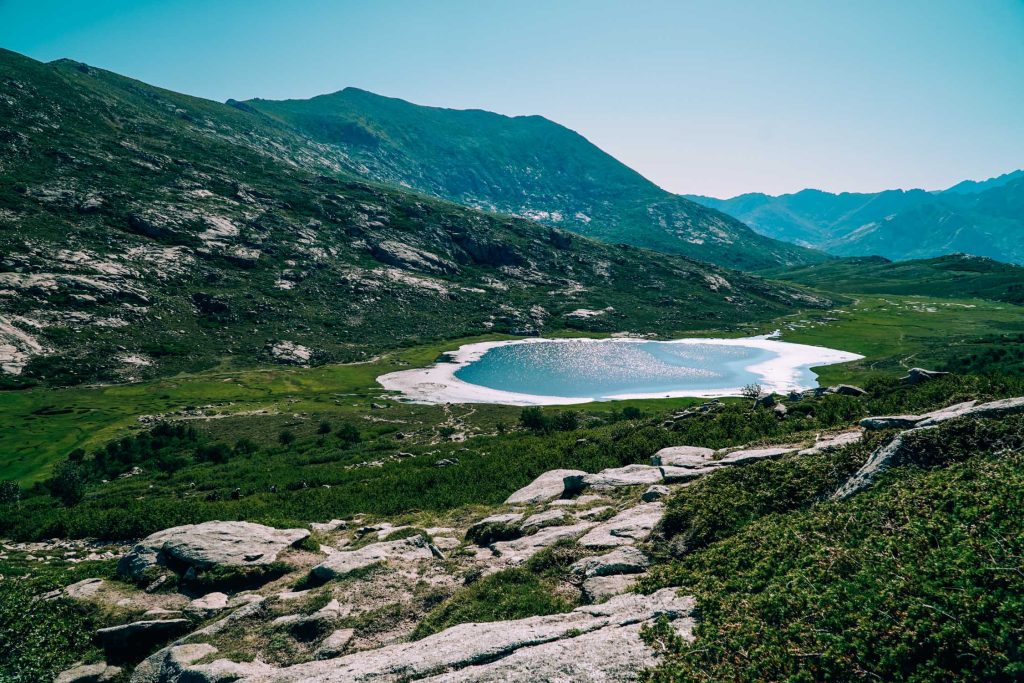

Day 8: Explore Ajaccio and the Garden of Bees
As the birthplace of Napolean Bonaparte, Ajaccio has been drawing travelers for decades. Including the Genoese architecture and old town, the island’s capital is filled with history. While exploring the city, make sure to visit Maison Bonaparte, Napoleon’s former home, or discover Italian and Corsican art at the Musée Fesch. Do not forget to walk around the old Genoese citadel too, nor the San Roccu Cathedral, as these two really form the heart of Ajaccio’s cityscape.
Tip! Book a guided historical walking tour of the city, so you can see all the highlights in one day.
After your historical deep-dive, you can choose to either relax at one of Ajaccio’s many sandy beaches, or hike the Chemin des Crêtes trail, from which you get lovely views of the city’s surroundings. If you are like me, however, you are probably hungry after all that wandering around, which is why Marché de Ajaccio – the city’s biggest market – must be on your foodie radar. Expect fresh seafood, Corsican delicacies and wine.
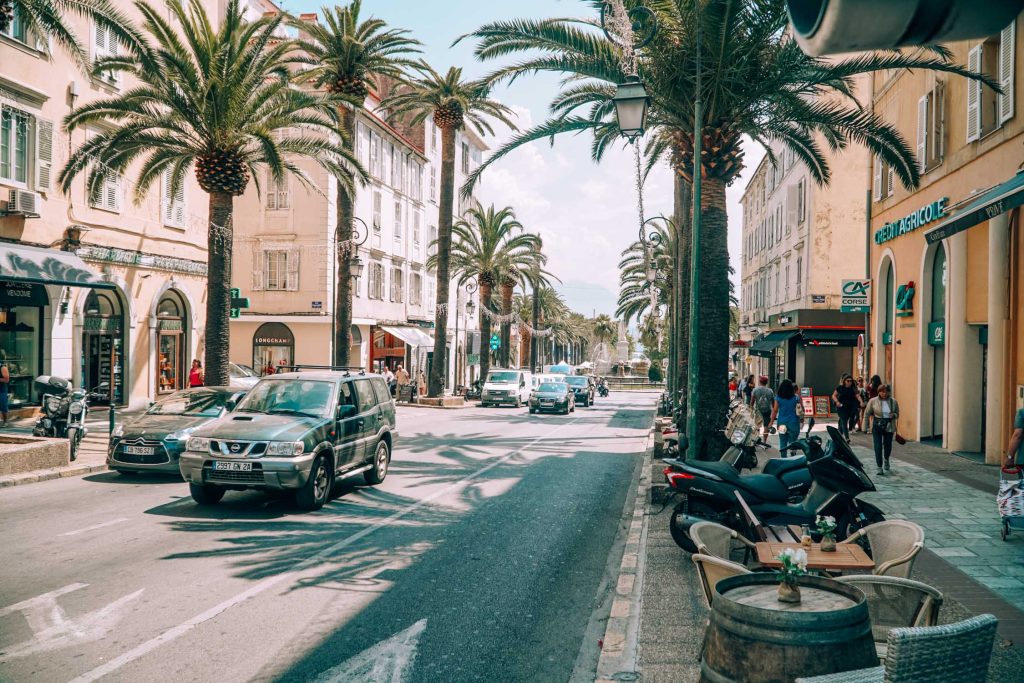
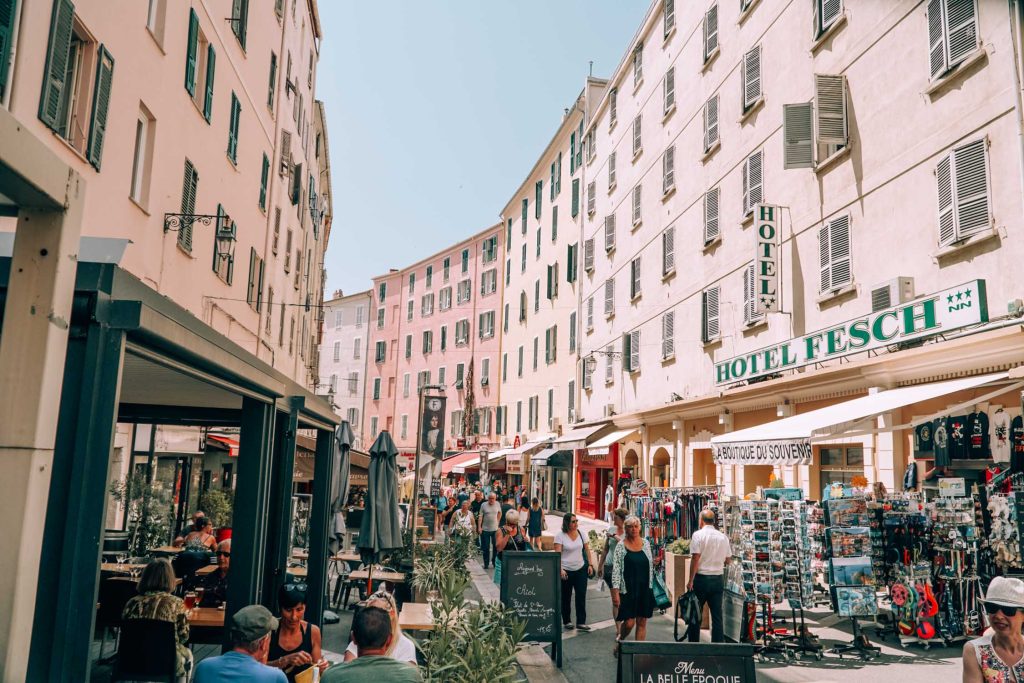
Another special food experience can be found at the Jardin des Abeilles, where they produce several types of honey which you can taste at their garden as well. With Corsica having a separate AOP for their honeys, this is the place to sample this natural sweetness and buy an authentic souvenir. Prefer wine over honey? Then you are in luck that Ajaccio has its own wine AOP as well! Read my Corsican wine guide to get pick the best vineyard in the area for you.
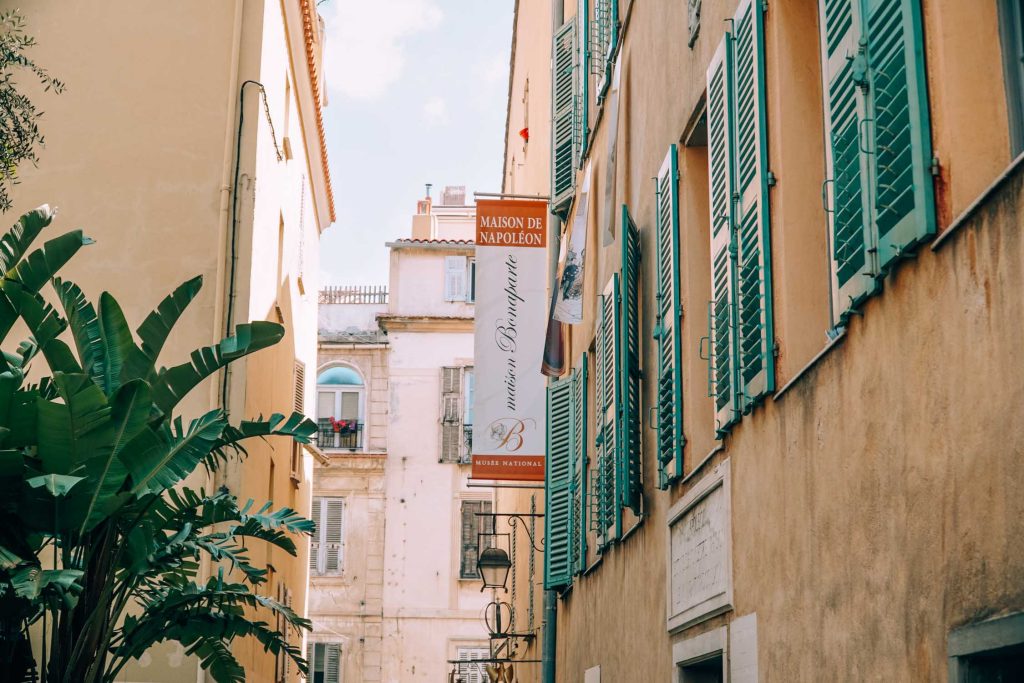
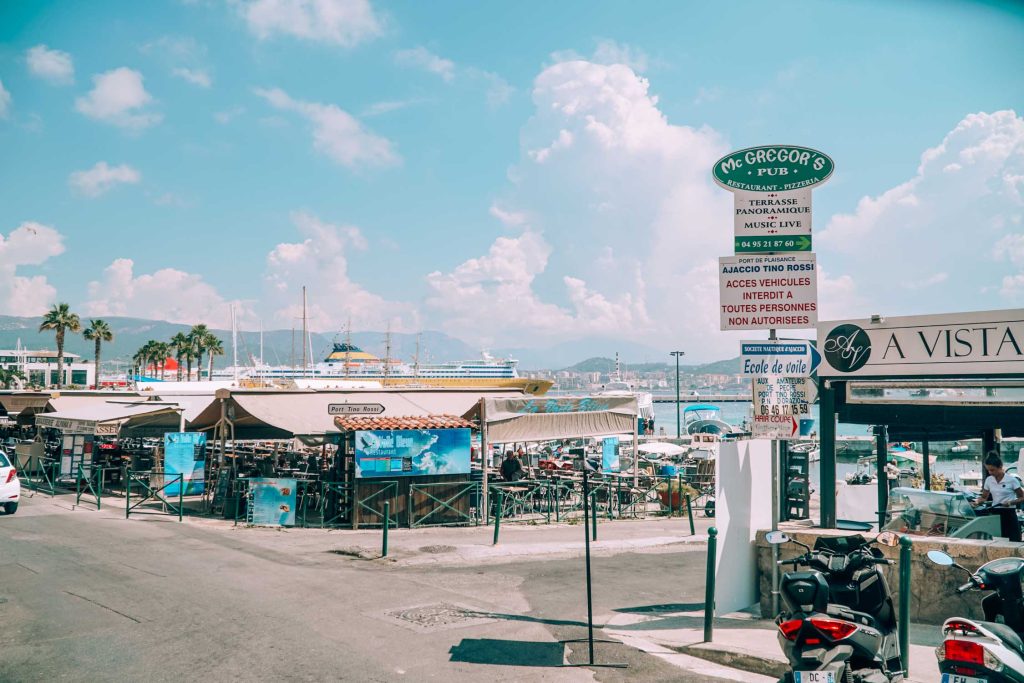
Where to Stay in Ajaccio
There are a great number of accommodation options within the city of Ajaccio. Its airport makes it a preferred first or final destination, which is proven by the sheer number of hotels close to the terminal. However, my favorite two hotels are within Ajaccio itself. Hotel San Carlu is a boutique hotel within the old town that offers chique rooms and a rooftop bar that overlooks Corsica’s capital. If its price point is a little too much for you, then I would recommend Napoleon, a far more affordable hotel located in the city center.
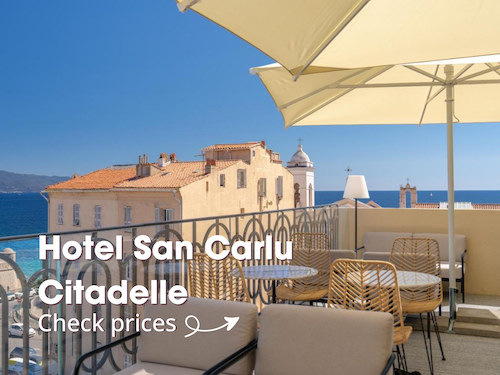
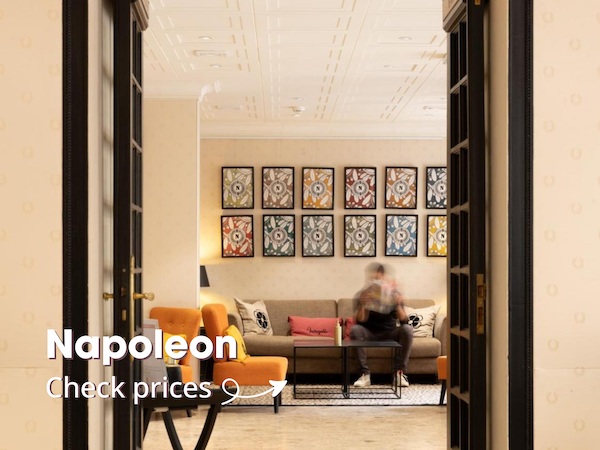
Day 9: Propriano & Sartène
Albeit small, Propriano is famous for its quaint harbor, colorful streets and jet set vibe. Spending a day here means eating good seafood, taking a stroll past all the pleasure boats in the harbor and relaxing by the beach. Propriano’s three beaches – Campomoro, Cala d’Agulia and Porto-Pollo – can be reached by car and foot and are all three equally stunning. Perfect if you have been craving a slow Mediterranean day!
Tip! Prefer to take the adventurous route? Then go canyoning in the Baracci canyon close by Propriano
For those of us eager to explore, I would recommend visiting Sartène in the afternoon. This small medieval town tells the history of the Genoese and is therefore the perfect place to get lost in. Visit the Musée de Préhistoire et d’Archéologie Corse to learn all about the environment’s past. The Place Porta is also the perfect place to have a drink or stroll around the Saturday morning market. Prefer more rural surroundings for your aperitivo? Then visit one of Sartène’s vineyards that bear the area’s own special AOP.
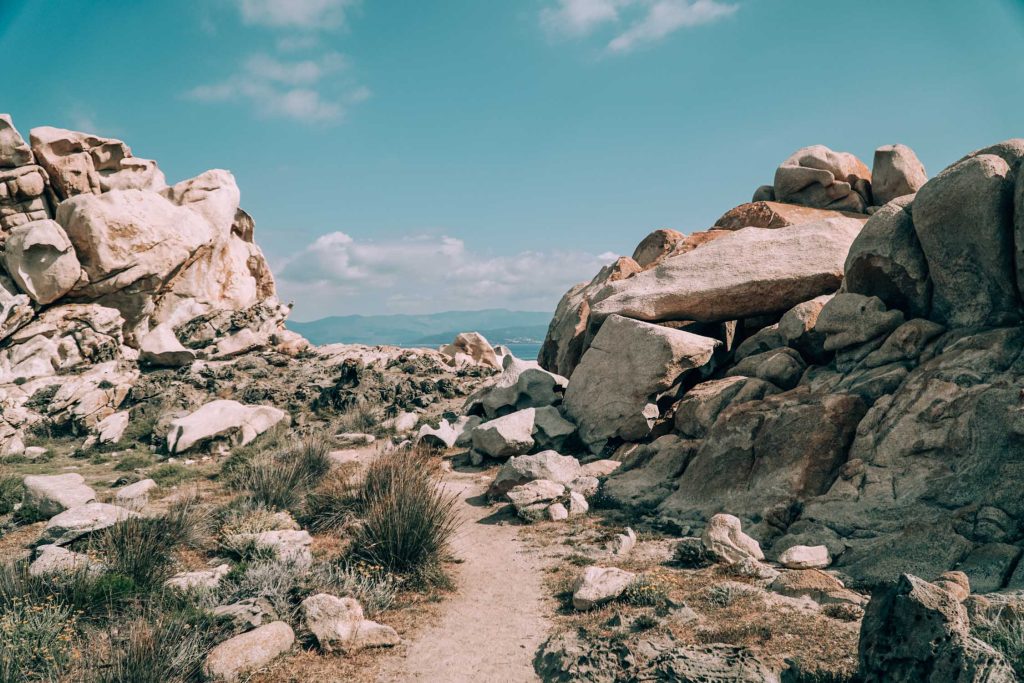
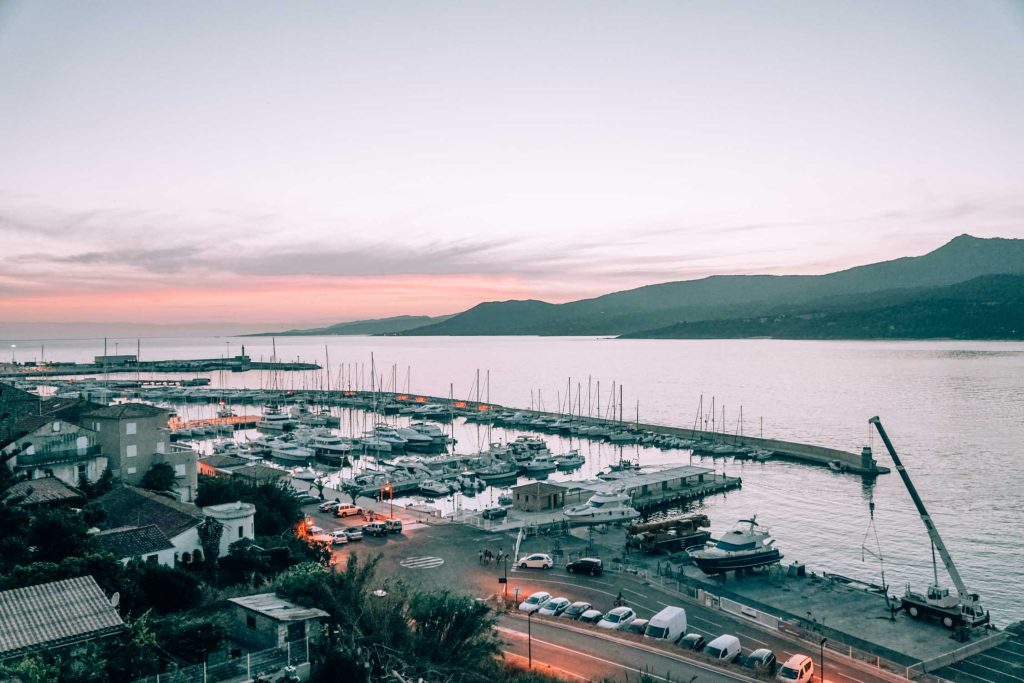
Where to Stay in Propriano & Sartène
You can choose to stay in Propriano if you prefer the beach as the backdrop to your dinner or opt for Sartène so you are closer to your next stop, Bonifacio. When staying in Propriano, you will encounter mostly luxury hotels, like the Hôtel Marinca & Spa. While it will set you back €700 a night, you do get a private beach, spa and fine dining. For an equally luxurious stay without the hefty price tag, you should consider Résidence Guddelmoni, which offers private villas for a quarter of the price.
In and around Sartène you can find a couple of vineyards offering rooms and villas as well, which I have listed in my Corsican wine tasting guide. At these spots, you can taste as much wine as you want, without having to drive back to your hotel. Doesn’t that sound fantastic? If you wish to stay in Sartène, however, I recommend Appart’Hotel Fior Di Ribba, which offers spacious apartments, or Hotel Des Roches, which has gorgeous views of the hills and the city.
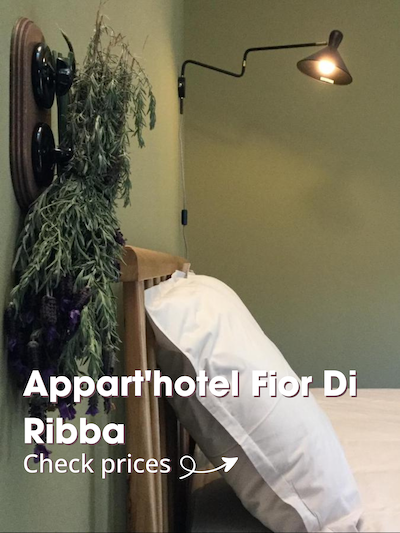
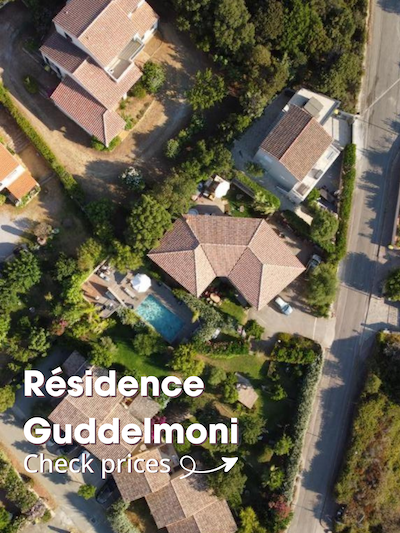
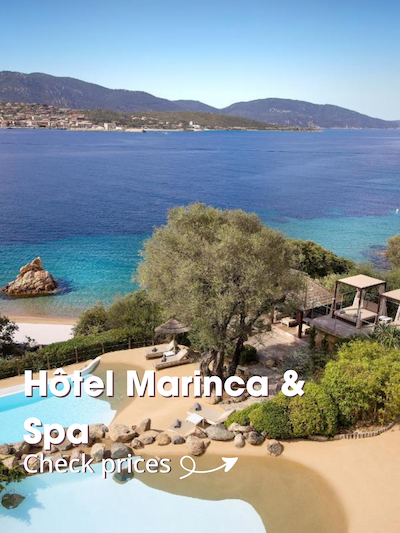
Day 10 & 11: Bonifacio & the Lavezzi Islands
You need to spend two days here, as this is one of the most magnificent cities on Corsica. Once you see Bonifacio’s citadel, you will understand. Built on top of a cliff that strongly resembles the Cliffs of Dover, although more tropical, the views from the marina are already enough to make you want to stay here forever.
Start your day by exploring the city’s well-protected harbor. The steep cliffs rising from either side of the canal leading to the marina will explain why this was the first Genoese stronghold on the island. Afterwards, make your way up to the old citadel, where you can browse the different artisanal shops, wander its ancient streets and look at the view, that sometimes allows you to see Sardinia in the distance.
Tip! Book a guided city tour to get to know everything about beautiful Bonifacio
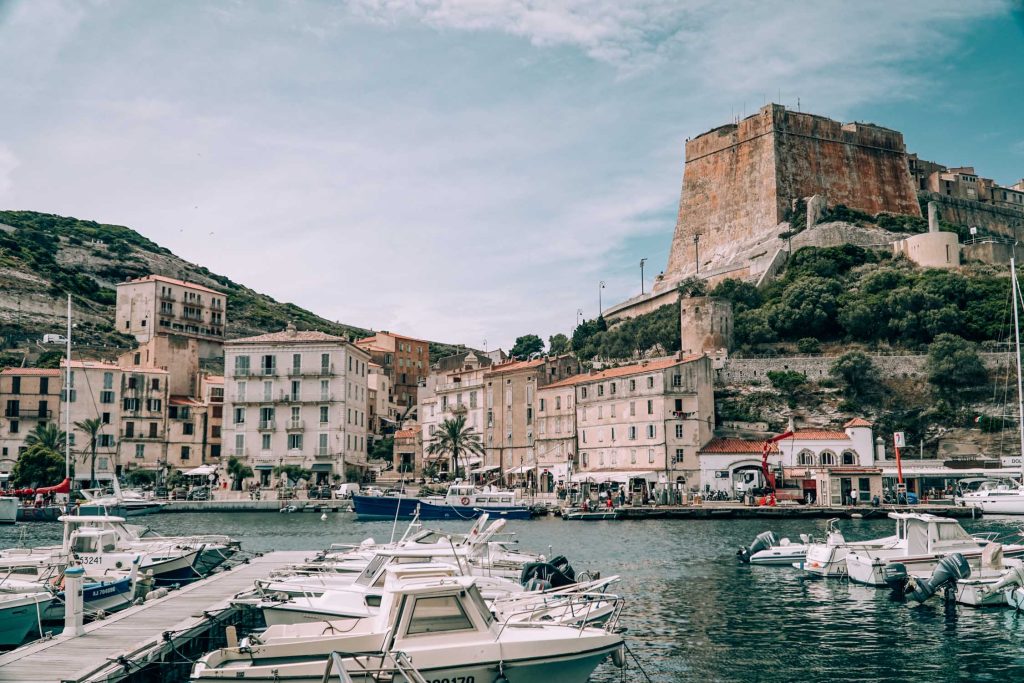
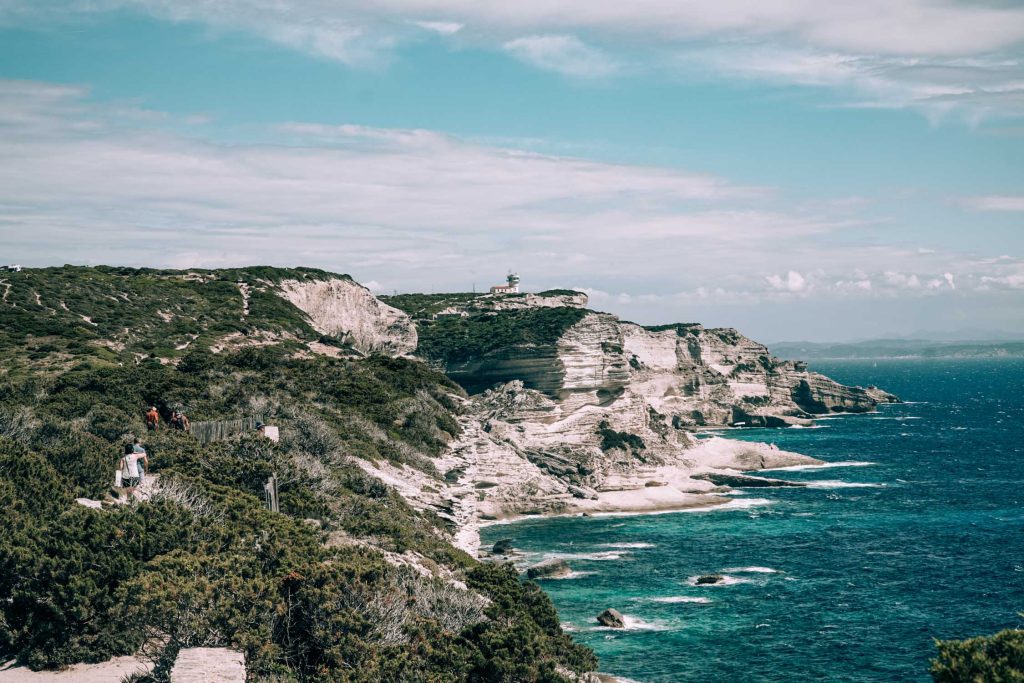
Exploring the city, including a long lunch and dinner, will take up most of your day, but if you are a quick adventurer, you might want to check out Bonifacio’s beaches. The Petit Sperone, La Rondinara, Balistra and Canetto beaches are popular among tourists and locals alike and are the perfect base to go kayaking or windsurfing from.
The next day I urge you to book a boat trip to the Lavezzi islands. These islands are uninhabited and characterized by their smooth white rock formations and the Cory’s shearwater bird, which uses the islands to breed. A boat trip here will mean lots of snorkeling, hiking and relaxing by the beach.
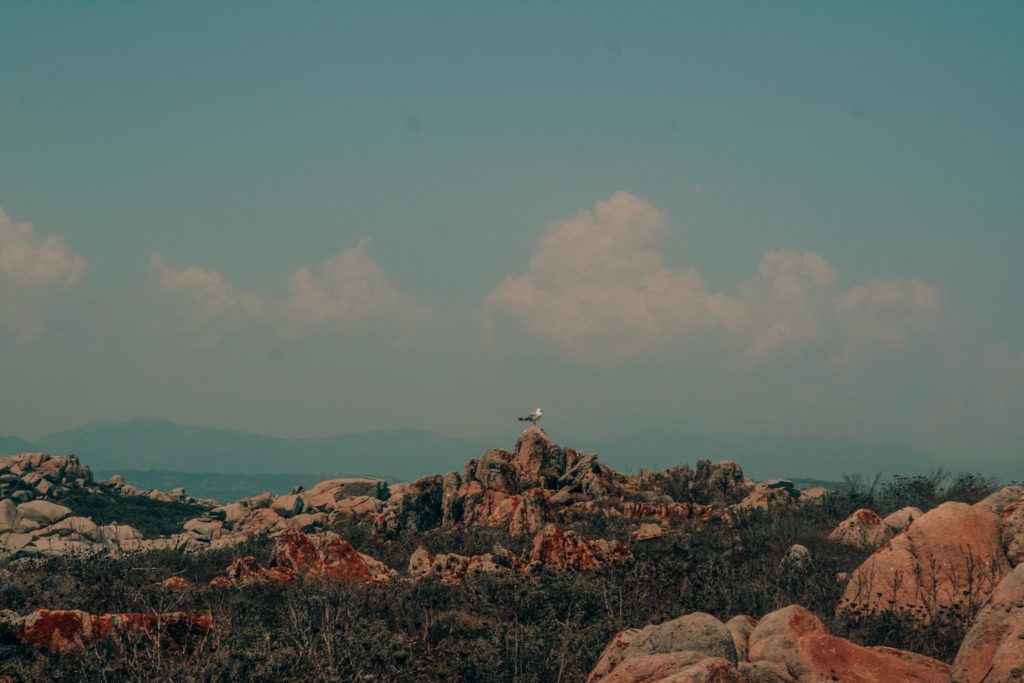
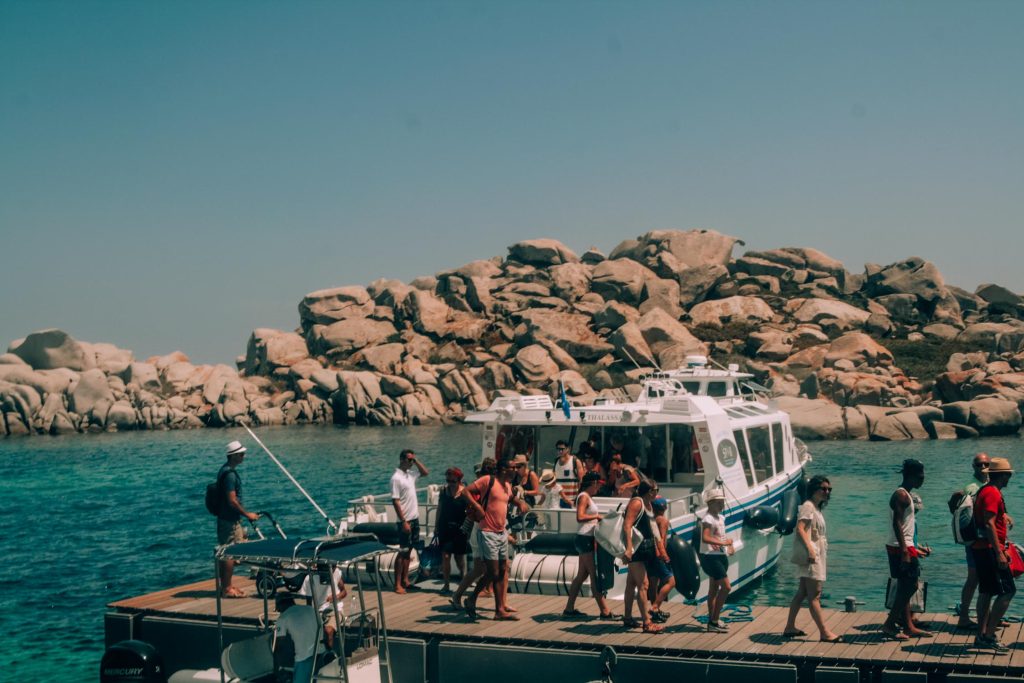
Where to Stay in Bonifacio
After hiking the first half of the GR20, my dad and I stayed at the unique Colomba Hôtel, which is located in the center of the citadel. The rooms are adorable, and I remember the breakfast being fantastic. If you prefer a spa treatment wherever you go, however, staying at Hotel & Spa Genovese is your best choice. The hotel is perched on the edge of the citadel, which provides guests with splendid views. To stay closer to the marina – which is a lot easier with your luggage – I recommend Hotel Solemare, which has equally great views of the harbor and the citadel.
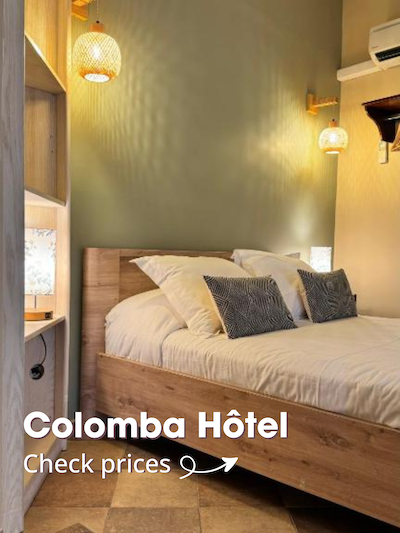
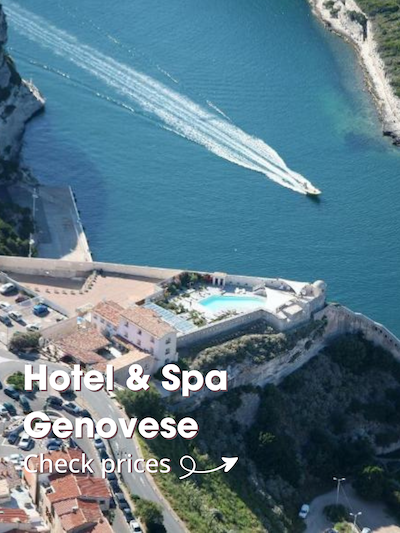
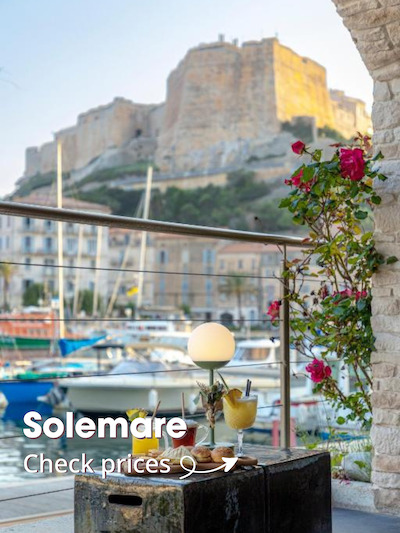
Day 12: Aiguilles de Bavella
This is one of my favorite spots for hiking on Corsica. Imagine trees shaped by years of strong winds, and dramatic rock formations: Bavella offers unforgettable scenery, along with weather that can change in an instant. The safest and most enjoyable time to hike here is therefore in the early morning or late afternoon, as summer afternoons often bring sudden and dangerous thunderstorms. But on clear days, it’s easily one of the most stunning regions on the island.
The most well-known trail in Bavella is the one leading to the Trou de la Bombe, the famous hole in the rock. This trail takes about three hours to complete, and since it circles back, you won’t be walking the same path twice. The hike itself is gentle, winding mostly through pine forest. Just follow the red trail markers to stay on course or consider joining a guided tour if you want to learn more about the area’s unique ecosystem.
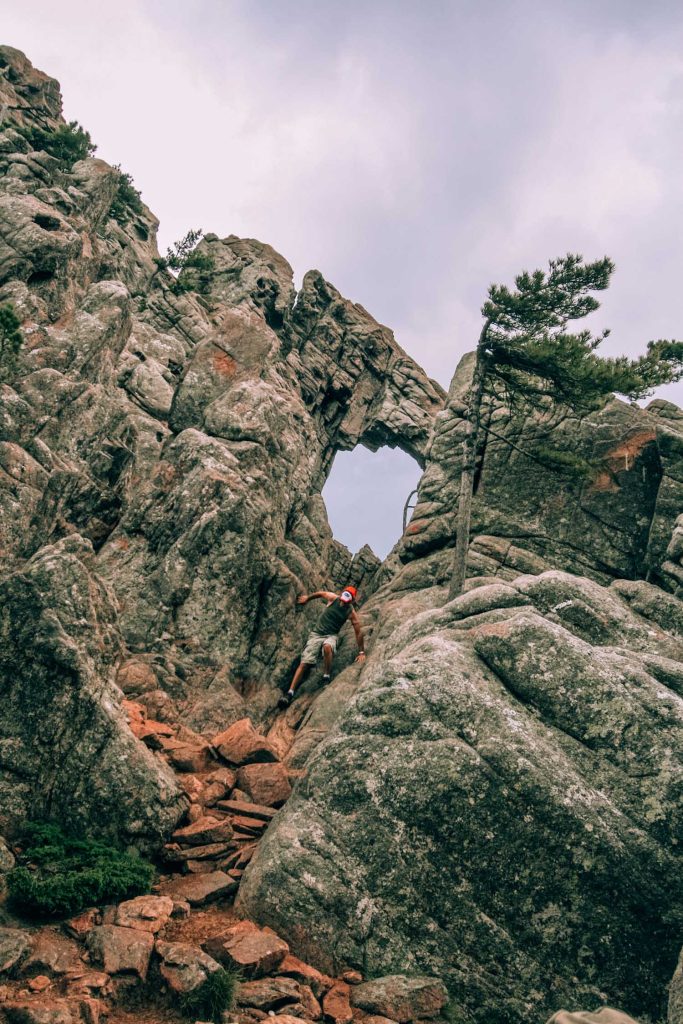
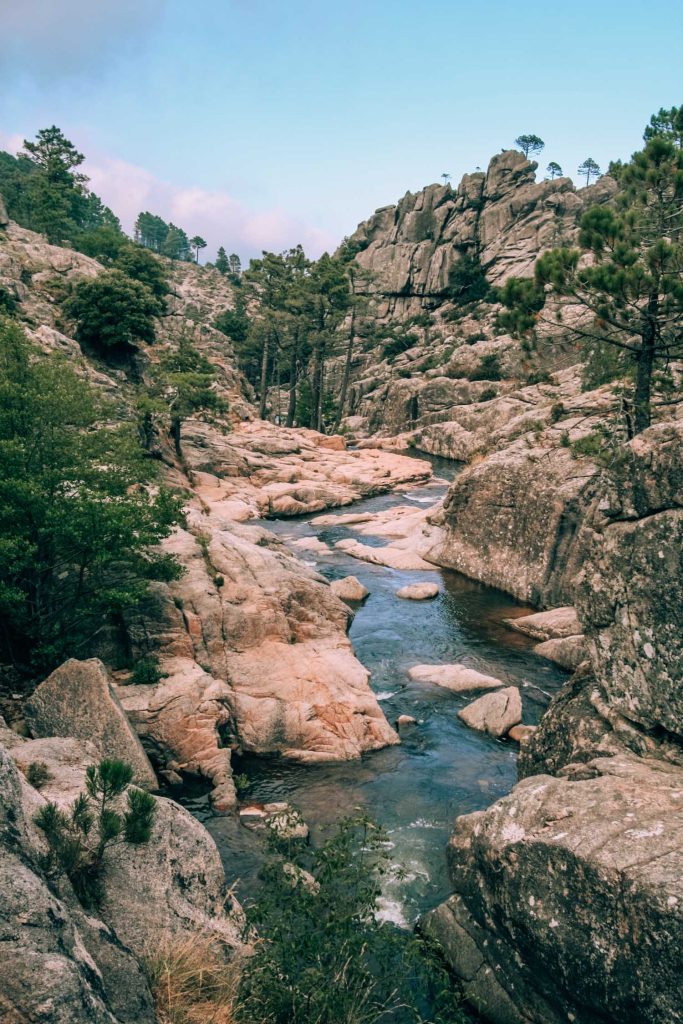
That said, Bavella itself is worth visiting even without a major hike. For sweeping views, head up to the Croix de Lecca. This trail is a bit tougher than the one mentioned above due to its rocky paths, even though it’s roughly an hour shorter. Look for green trail markers to find your way.
Another great hike from this area is the route up to the Refuge de Paliri and back. This is the first (or last, depending on your direction) stop on the GR20 trail. It’s a relatively straightforward hike, though you’ll be gaining about 400 meters in elevation. The full round trip takes around four hours and offers incredible vistas along the way. Follow the red and white GR20 signs to reach the refuge, where you can have some lunch before heading back down.
And if hiking isn’t your thing, but you still enjoy the outdoors, there is the option of a 4×4 tour through Bavella and the nearby Ospedale Forest. These tours depart from Porto-Vecchio, the next stop on this itinerary, and provide a less strenuous way to experience the region’s wild beauty. Still, I personally believe the best way to connect with nature is to step into it, not just drive through it.
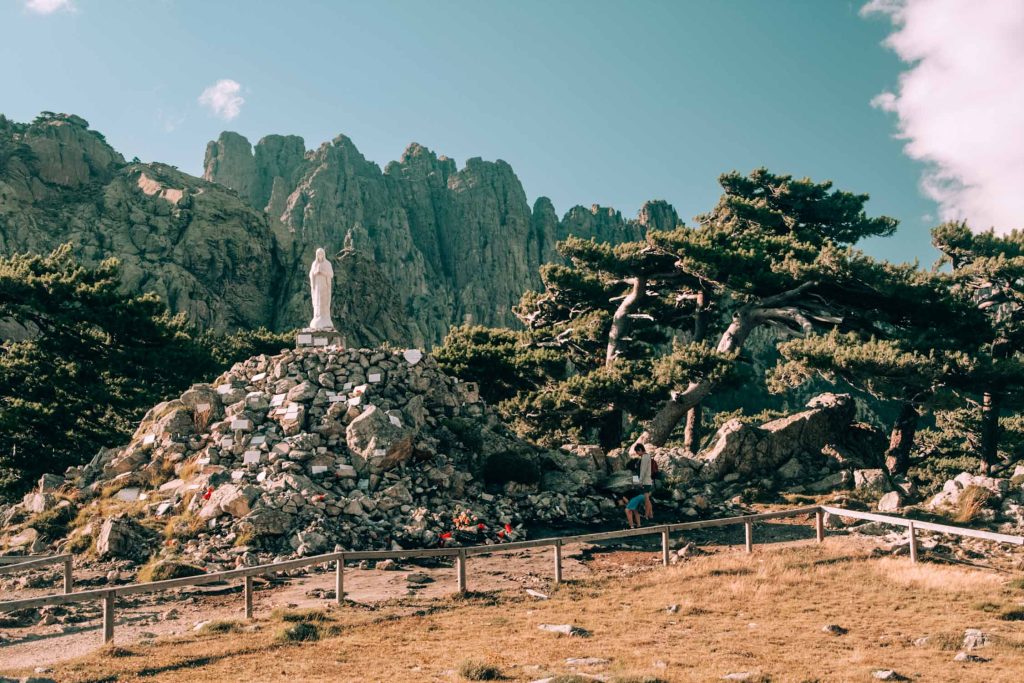
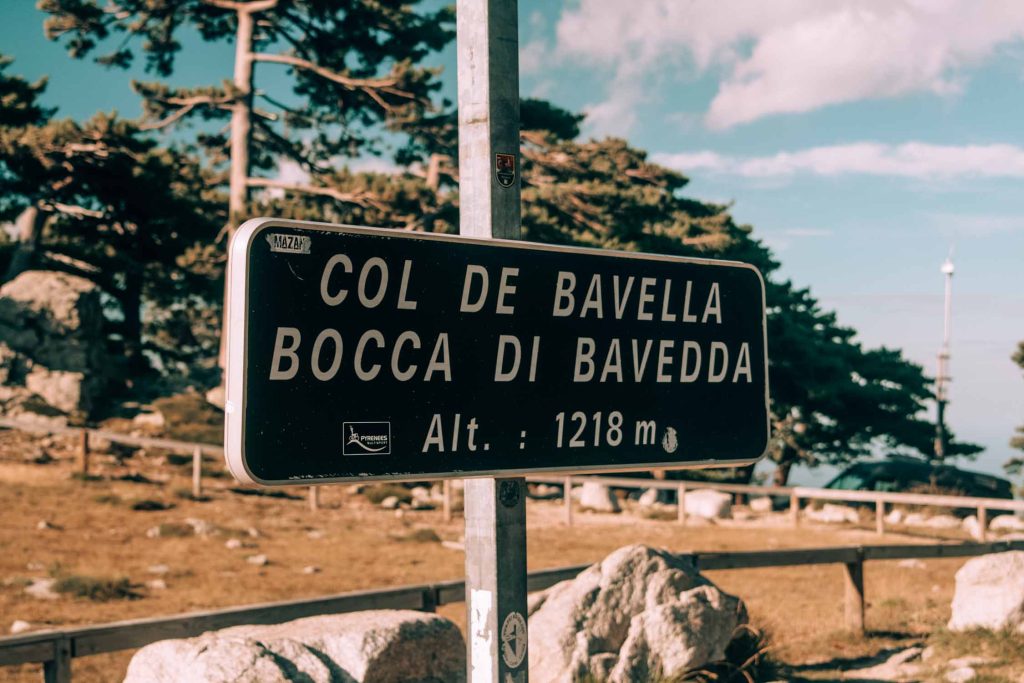
Where to Stay in Bavella
If you decide to spend the night in the village of Bavella, the easiest way to secure a place is by calling one of the local refuges or gîtes directly, since most of them aren’t listed on Booking.com, with Casa Jeromine being the exception. Accommodation in the Bavella area is generally spread out, with unique stays like the wooden caravan of Roulotte insolite U Tragulinu, or the more upscale Les Hauts de Cavanello, which features a swimming pool. If you don’t mind a slightly longer drive to reach the village, then a night at the eco-friendly Cocoon Village is worth it. Here, you can sleep in clear, dome-shaped tents and fall asleep under the stars – a magical way to experience the wild side of Corsica.
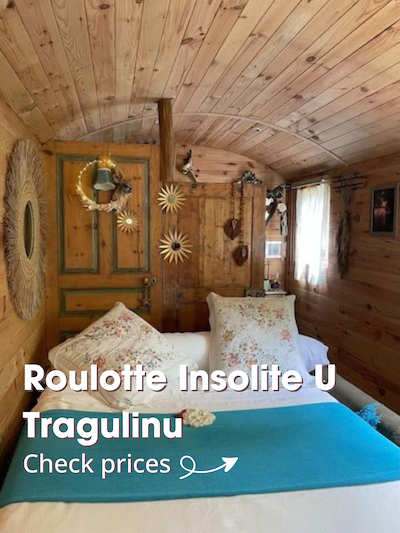
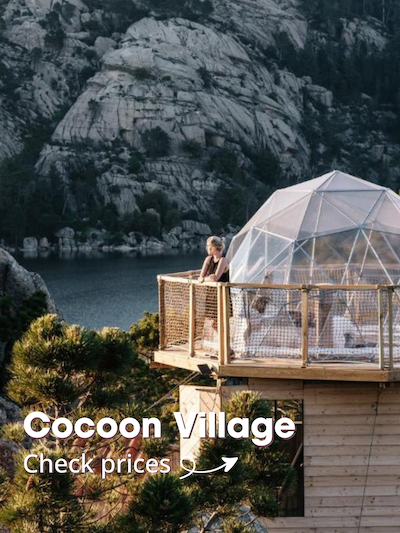
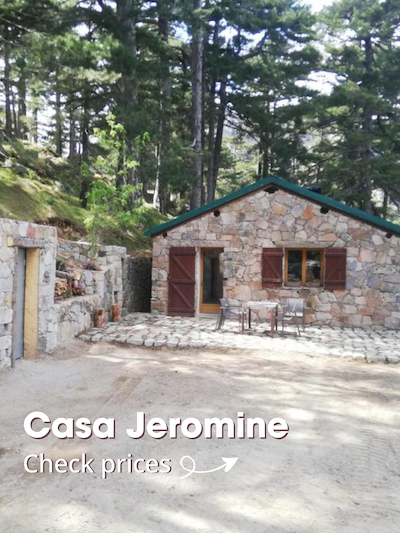
Day 13 & 14: Porto-Vecchio
Porto-Vecchio translates to “old harbor,” and that’s exactly what it is. Though it only gained a permanent population after World War II, the town still boasts an old fortress, charming harbor, and picturesque churches. Much like Saint-Florent, it attracts a mix of wealthy visitors lounging on yachts and day-trippers wandering through cobbled streets. It’s also a delight for food lovers, with excellent restaurants dotted around the city.
Despite its small size, Porto-Vecchio once played a key role in the Genoese defense network. You’ll see traces of that in its architecture – like the forts Bastion de France and Bastion San Antonia. Don’t miss the iconic Porte Genoise, the Chapelle de la Sainte Croix, or the Saint Jean-Baptiste church when wandering through the city’s narrow streets.
Did you know that Porto-Vecchio has the perfect microclimate for winemaking? Check out the best spots to go wine tasting in the city with this blog post.
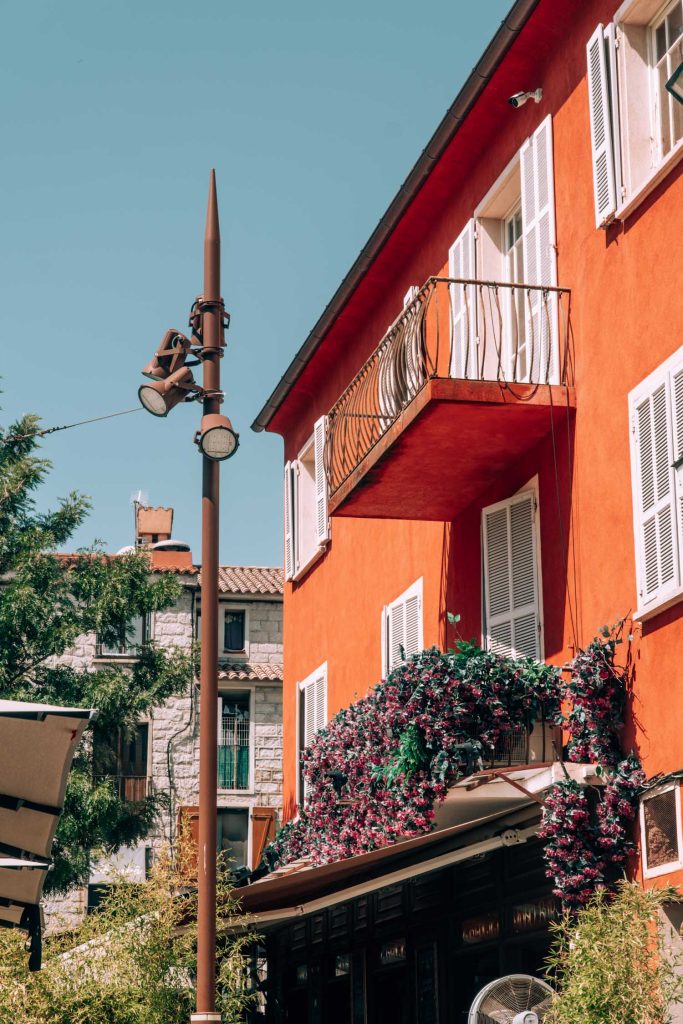
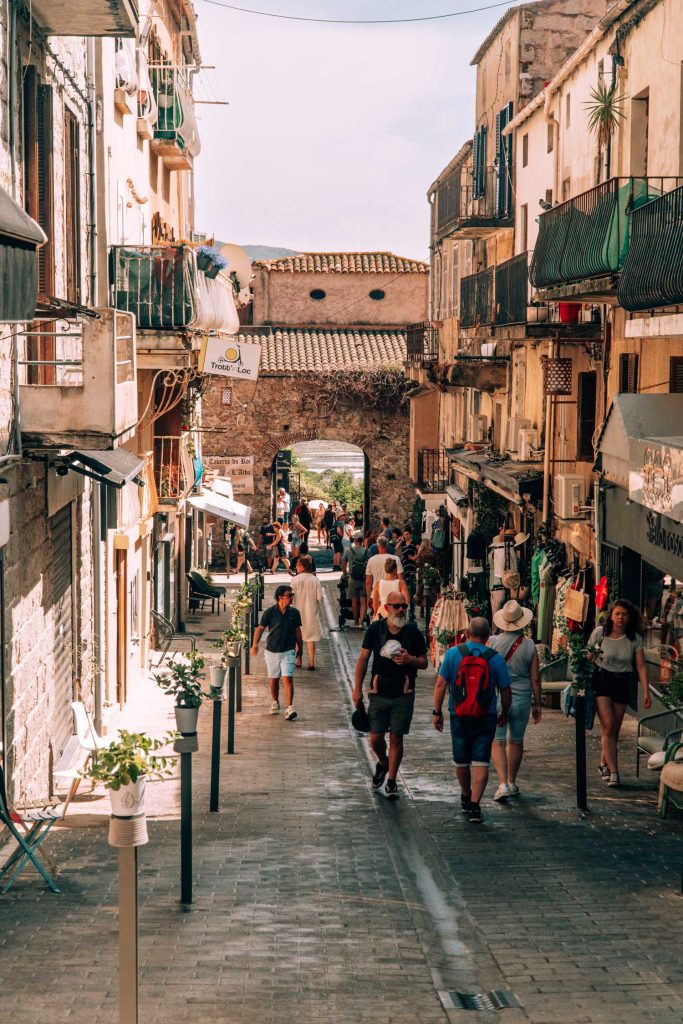
When you’re ready to rest your legs, grab a table at Place de la République, the bustling main square, or follow our lead and walk down to the marina for lunch or dinner at Café La Marine, where the sushi was so fresh it felt like the fish might swim off our plates.
But that is not all: Porto-Vecchio’s coastline is just as impressive. Head to Palombaggia or Santa Giulia – two postcard-worthy beaches with soft sand and shallow, turquoise water. It’s the ideal place to bring a snorkel and explore the vibrant underwater life, which you can experience by yourself or through booking a boat trip. Combine snorkeling with a beach day at Santa Giulia, or enjoy good food with a sailing trip. From Porto-Vecchio, you can even reach the Maddalena archipelago in Sardinia, where you can spot flamingos and snorkel in some of the clearest waters of the Mediterranean.
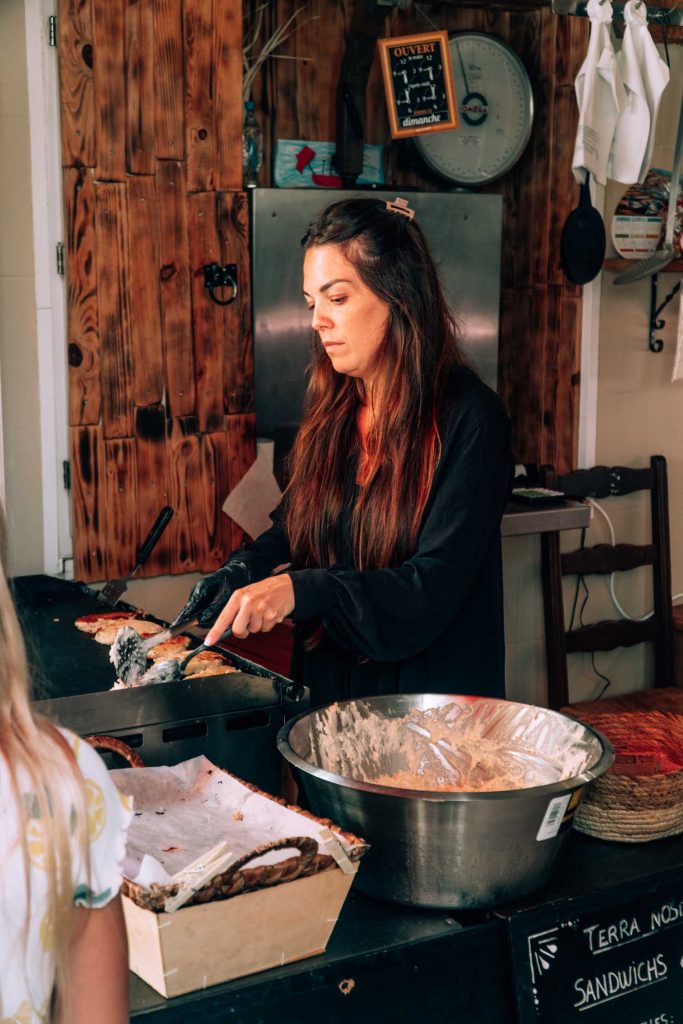
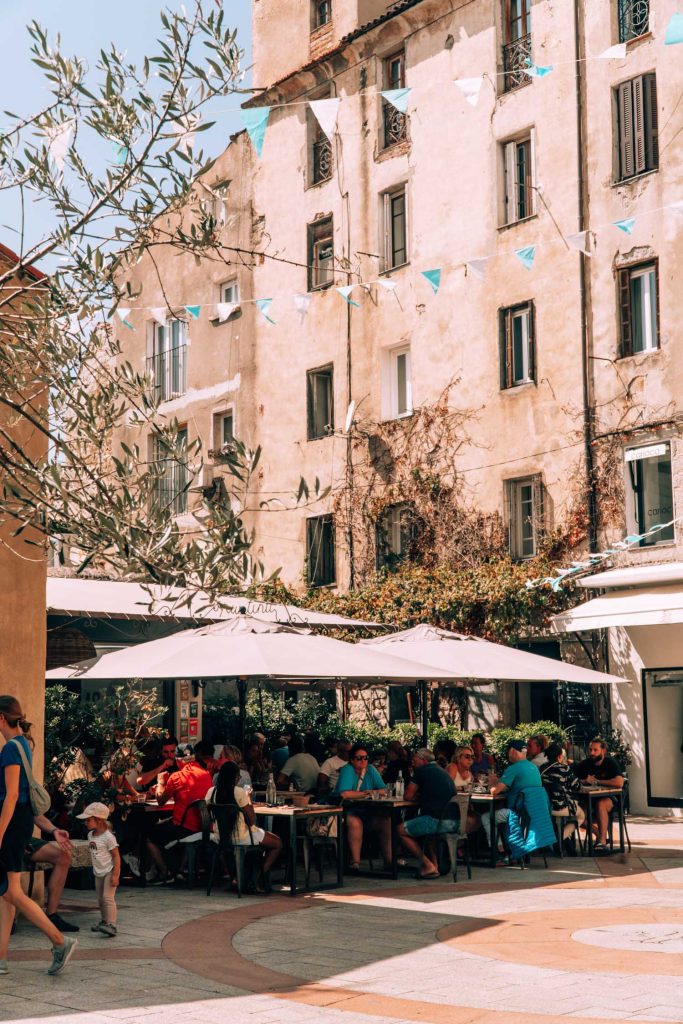
Where to Stay in Porto-Vecchio
For a stay right in the heart of Porto-Vecchio, Holzer II is a great choice, with its small street-side terrace and charming, character-filled rooms. If you prefer to wake up to views of the hills surrounding the town, then the boutique hotel La Balamina is an absolute gem. But my personal favorite? Apart from Domaine de Casanghjulina, which I mentioned earlier, Casa Santini x Roc Seven is a true hidden gem. Set in a traditional Corsican building, it offers peaceful rooms and stunning views over the harbor and the sea.
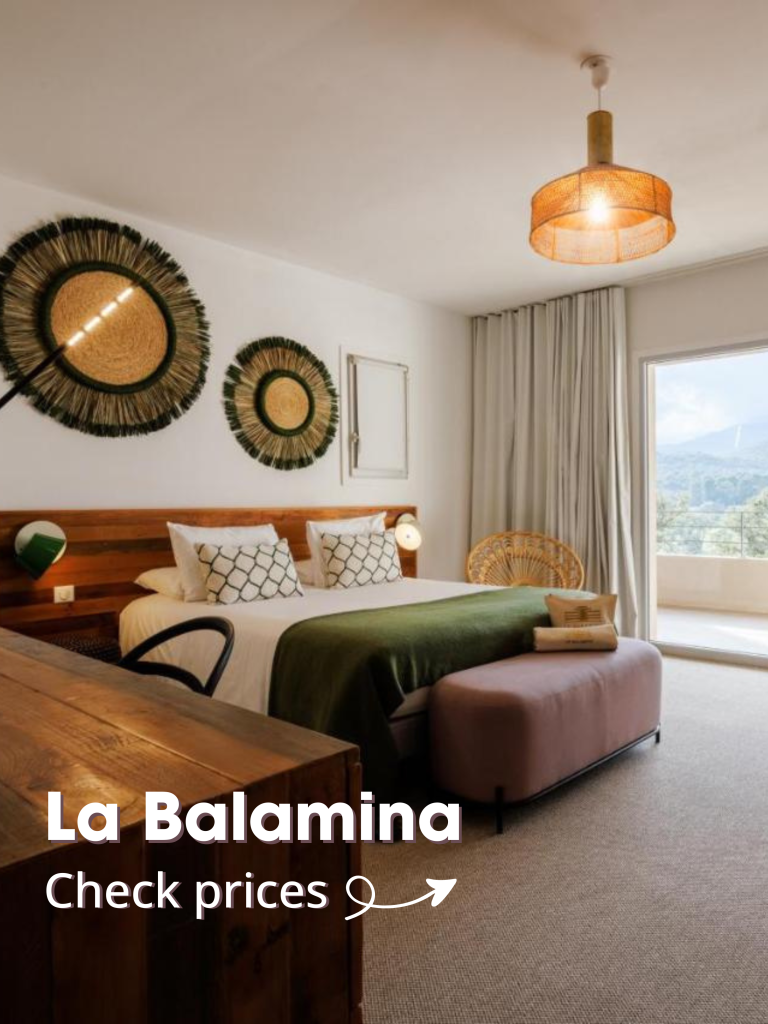
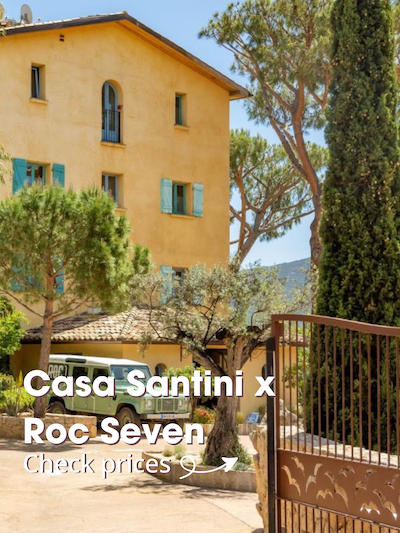
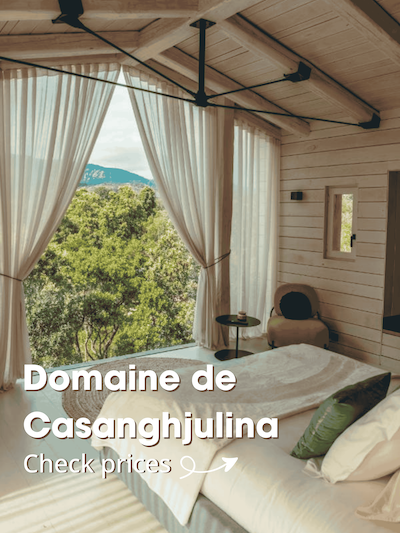
Day 15 & 16: Corte and Canyoning
Corte is one of my favorite towns on Corsica – and it is about to become one of yours too. It is hard not to be charmed when you see the citadel perched dramatically on a cliff. As the heart of Haute-Corse and the island’s university town, Corte is a gateway to Corsica’s mountainous interior and a fantastic base for outdoor adventures.
You will be spending two days here. On your first day, take time to explore Corte itself. The must-see? The Citadelle de Corte, which sits at the center of town. Inside, you’ll find the Musée de la Corse, with a permanent exhibit detailing the island’s history and a rotation of temporary exhibitions throughout the year. If you would rather admire the fortress from a distance, walk up to the Belvedère viewpoint for breathtaking 360-degree views of the city and surrounding peaks.
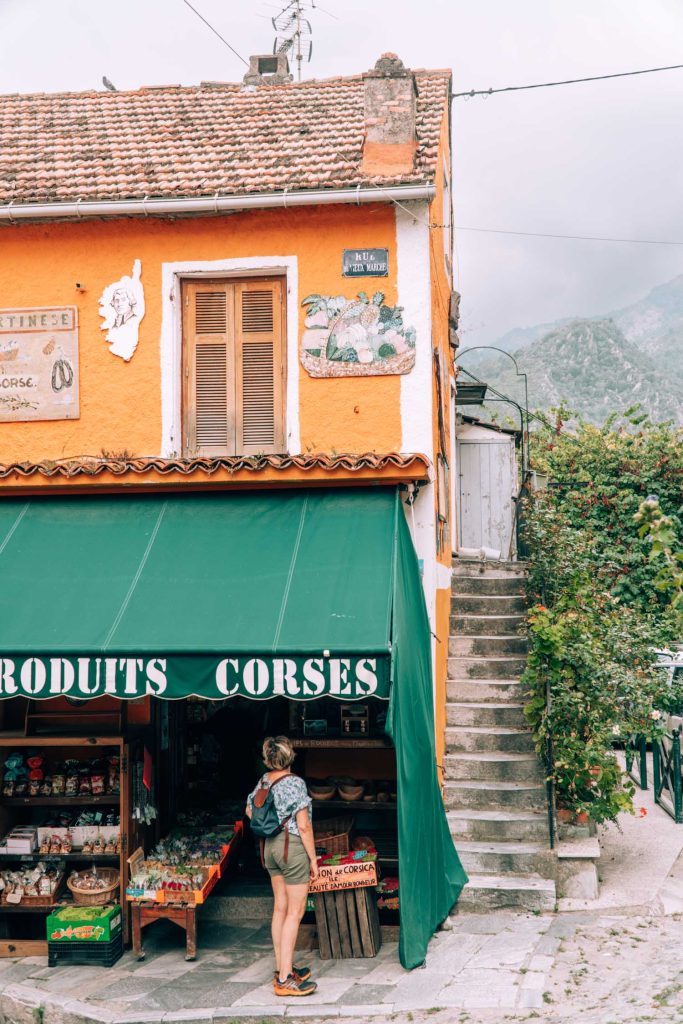

Day two is all about nature. Head into the Restonica Valley, a stunning area just outside the city. You can keep it simple with a short walk to the mouth of the gorge or tackle one of the more challenging hikes to Lac de Melo or Lac de Capitello. But if you’re in the mood for something more adventurous, why not explore the gorge in a wetsuit? Canyoning is one of Corsica’s top activities, and the Gorges de la Restonica is an ideal spot for it. This canyoning tour leaves from nearby Venaco and is sure to make your time in Corte unforgettable.
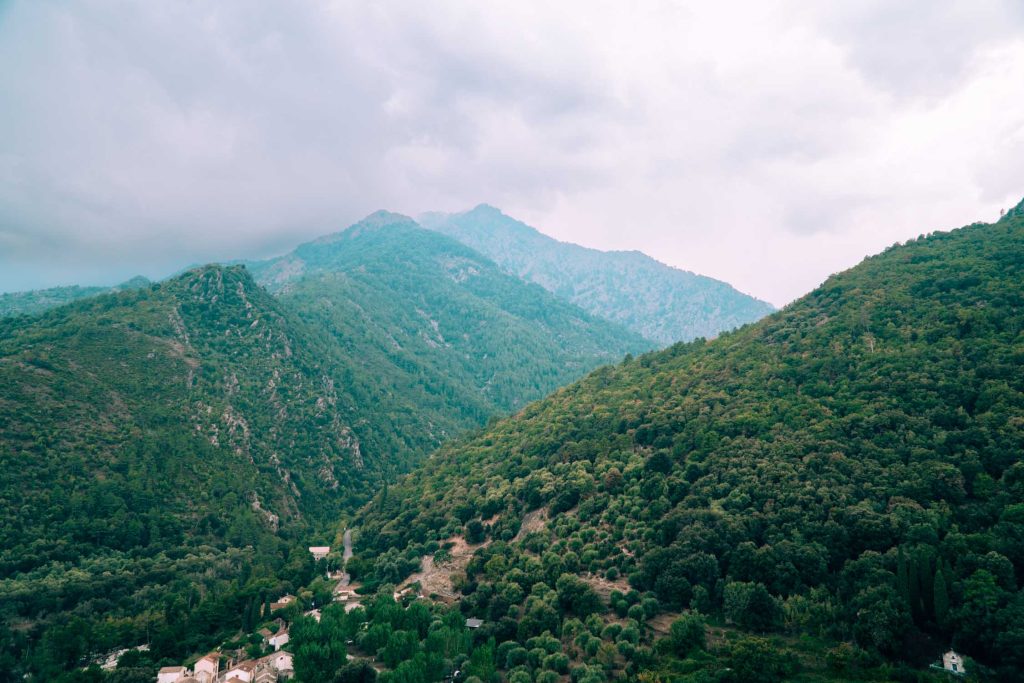
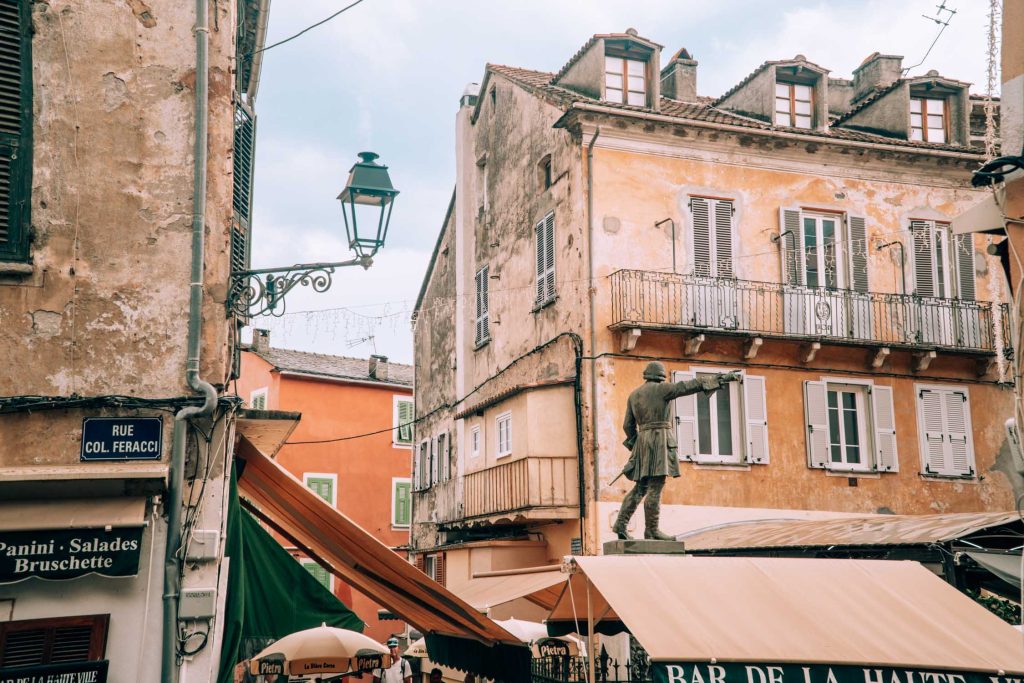
Where to Stay in Corte
Dominique Colonna remains my favorite place to stay in Corte, but the town has plenty of other great options, whatever your budget may be. If you prefer having your own space, want to cook up some Corsican dishes yourself, and keep costs low, then Apartment Padova T2 by Interhome is a good choice. Maison San Giovanni is set in the hills but still within walking distance of Corte, and guests often praise the host for being welcoming and an excellent cook.
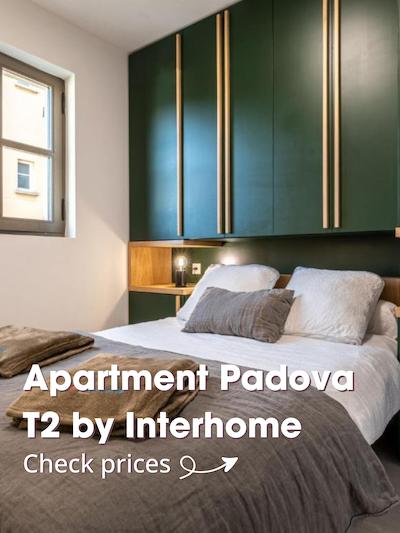

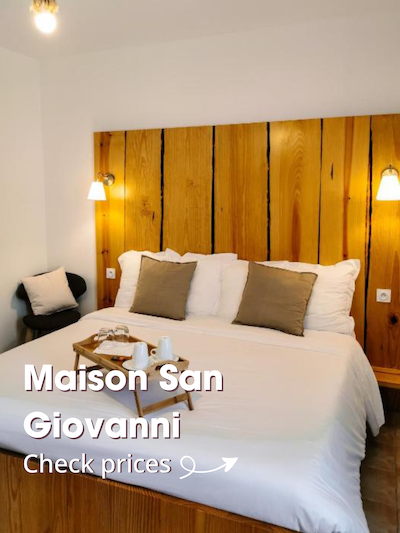
Day 17: Climb the Monte Cinto
If you are a hiker, you cannot miss out on Corsica’s highest mountain. With its height of 2706 meters it towers over this small island in the Mediterranean and forms one of the more challenging hikes on Corsica. Most hikes on Corsica can be considered challenging, so that means this one is for hikers who are not afraid to scramble their way to the top.
Tip! Make sure to get there as early as you can, as the weather in the mountains often takes a turn for the worst in the afternoon.
To get there, you drive for about one hour to the Asco-Stagnu ski station (1422 m) where you can park your car. The trek to the top is about six kilometers with 1400 meters of elevation gain, meaning you will have to get up early in order to finish the hike in one day. Up until the ridge at Pointe des Eboulis you will follow the GR20 trail, which you can recognize by the red and white marks. At the ridge, you will take a turn to the top and climb the last couple of hundred meters to the top. This part is said to be steep and sometimes slippery, so make sure to bring trekking poles to aid you.
Of course, there are many other shorter and easier hikes around, like the one at the Restonica Gorge. Make sure to pick a trail that suits your level of experience and fitness, as you should not miss out on Corsica’s incredible hikes.
Day 18 & 19: Explore Aléria and the Belly of Corsica
I like to call Aléria the belly of the island, as the land here is flat and fertile, allowing for agriculture and vineyards to thrive. Once Corsica’s capital during the Roman Empire, Aléria is now a quiet village, with only the archaeological site reminding us of its historic importance. Though often overlooked, this part of the island offers a welcome contrast to the long stretches of beach along the east coast and deserves a stop on one of the final legs of your journey.
In town, make sure to visit the Roman ruins, le site archéologique d’Aleria, alongside the museum housed inside the striking Matra Fort. The fort was built by the Genoese, while the ruins themselves date back to the second and first centuries BC. You can still see remnants of the old forum, thermal baths, and shops, so if you are into history, this one is for you.
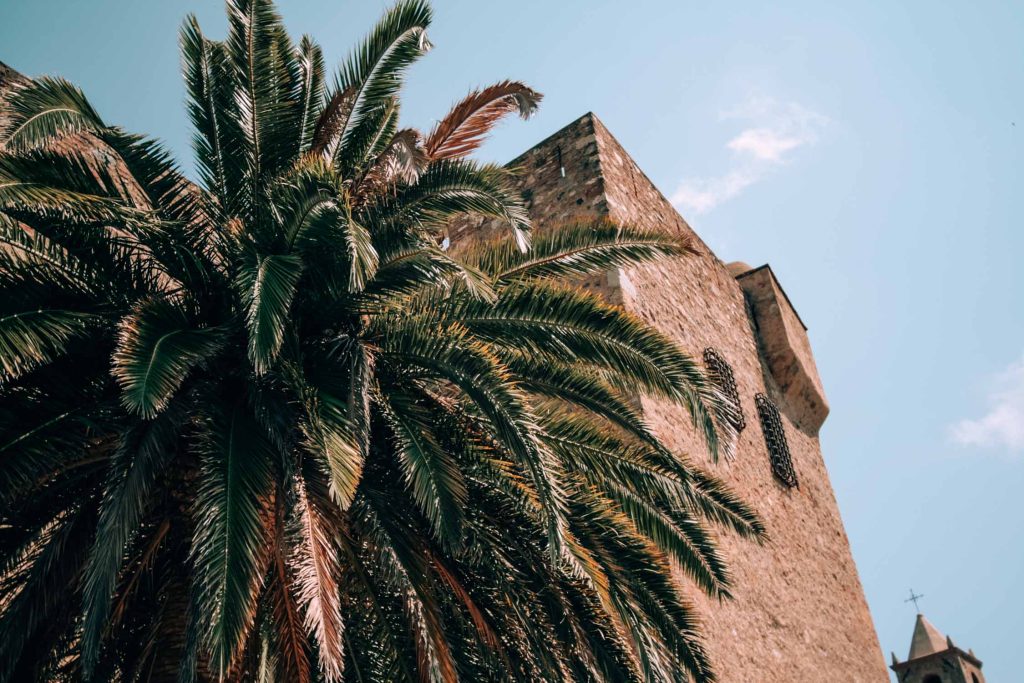
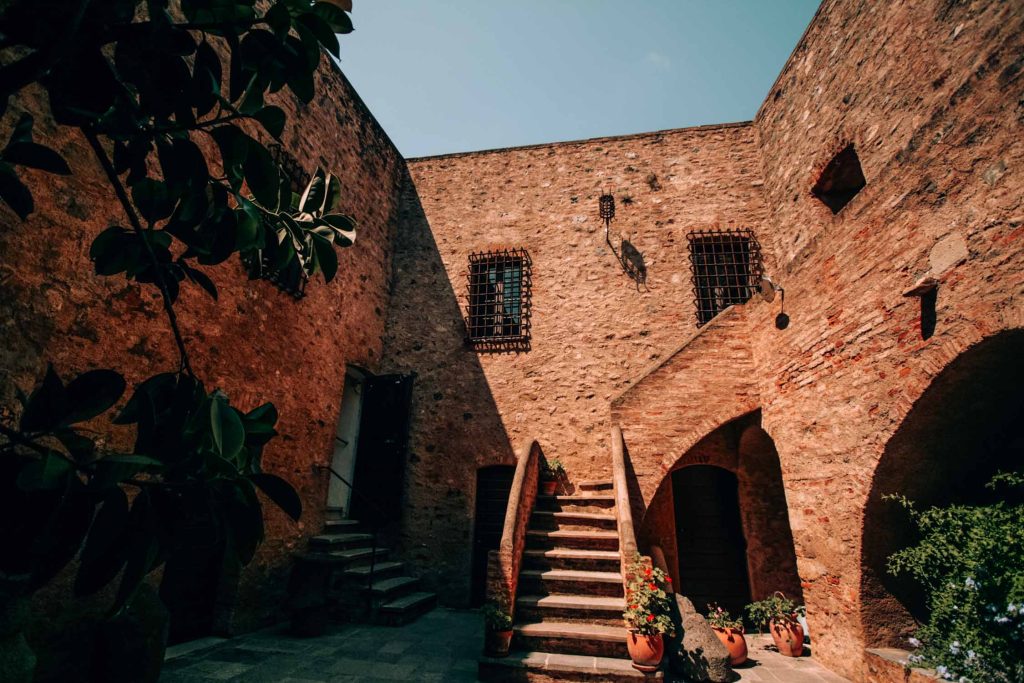
For me, travel is often all about the food, and if seafood is your thing too, then you must reserve a table at Aux Coquillages de Diana. This charming restaurant is perched on stilts over the Étang de Diana, the coastal lagoon next to Aléria, and serves some of the freshest fish and hands-down the best oysters I have ever tasted.
No food journey is complete without wine, and on Corsica, it is everywhere. While you can enjoy a tasting at Domaine de Terra Vecchia near the Étang de Diana, we chose to visit the quirky Clos Canereccia instead. This family-run vineyard cultivates Corsican grapes organically across 20 of their 22 hectares, and they definitely like to do things their own way. Our tasting began with reds and ended with rosé, which, in hindsight, wasn’t the ideal order. Still, our host was hilarious, and the wines were so good we left with as many bottles as we could carry.
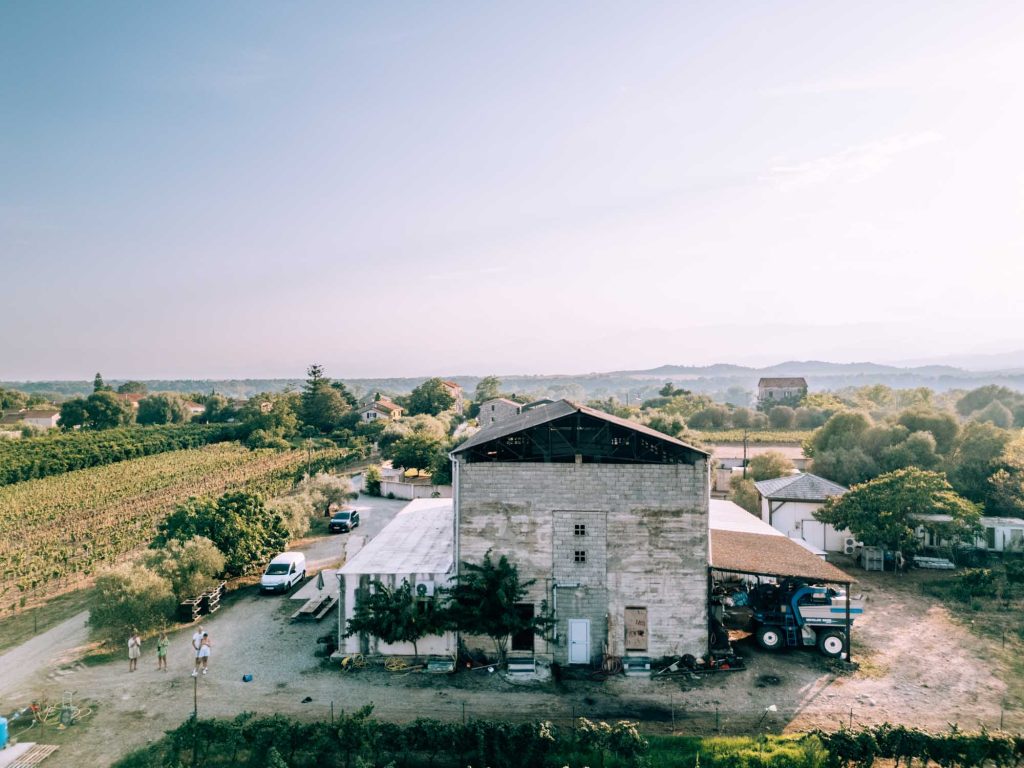
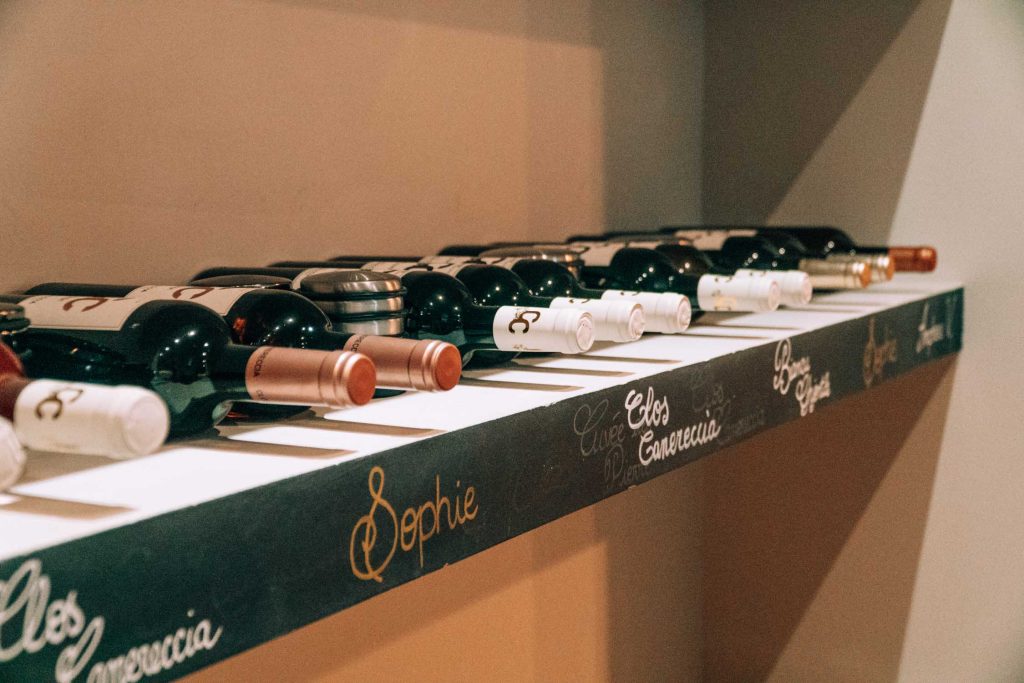
Finally, if you are around on a Thursday, don’t skip the weekly market in Bravone. Local artisans set up shop with everything from cheeses and jams to pastries, paintings, and handmade jewelry. We stayed at a camping near Aléria many times, and every trip included a visit to this market. When we returned last year, it was just as wonderful as we remembered.
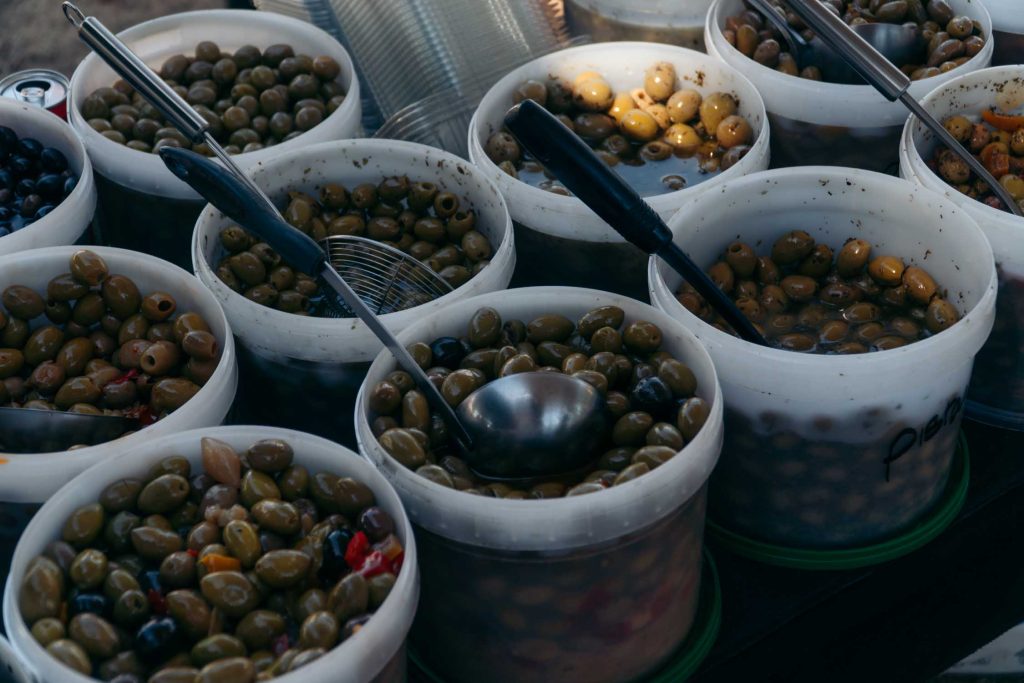

Where to Stay on East Corsica
The region around Aléria is well-known for its naturist beaches and campgrounds, and if that’s your thing, you’re in luck. Both Bagheera and Riva Bella are fantastic options, offering spots to pitch your tent or stay in a chalet nestled among the beautiful Corsican pines. Riva Bella comes with a full spa, while Bagheera focuses more on wellness activities like yoga and pilates. Prefer to keep your clothes on? Then Résidence Marina Di Bravone is a great choice, where you can rent an apartment with ocean views. Or treat yourself to a private villa at Demeure de charme Suarella Domaine de Marquiliani for a more secluded and stylish stay.
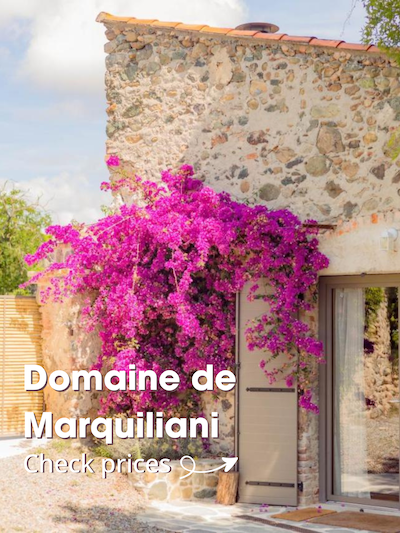

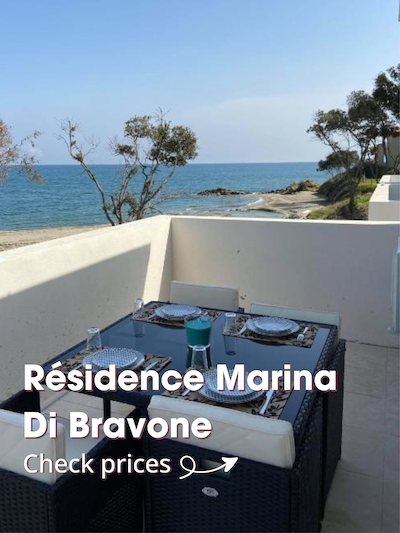
Day 20: Bastia
Too often, Bastia is treated as little more than a stopover, which is a pity. Once the capital of Genoese Corsica, this city has a rich past just waiting to be explored. Now the capital of Haute-Corse and the island’s second-largest city, Bastia is filled with charming restaurants, ornate Baroque churches, and a lively mix of old and new harbors. You will want to spend at least a day here to really soak up its history, which is why it is the perfect final stop on your 3 week Corsica itinerary!
With so many historical landmarks – like the Saint-Marie Church and the Palace of the Governors – one of the best ways to experience Bastia is by booking a guided tour. From the Genoese legacy to the city’s role in both World Wars, local guides bring Bastia’s complex history to life. Plus, the city’s layout can feel a bit chaotic at first, so having someone lead the way can make it much easier to appreciate its charm.

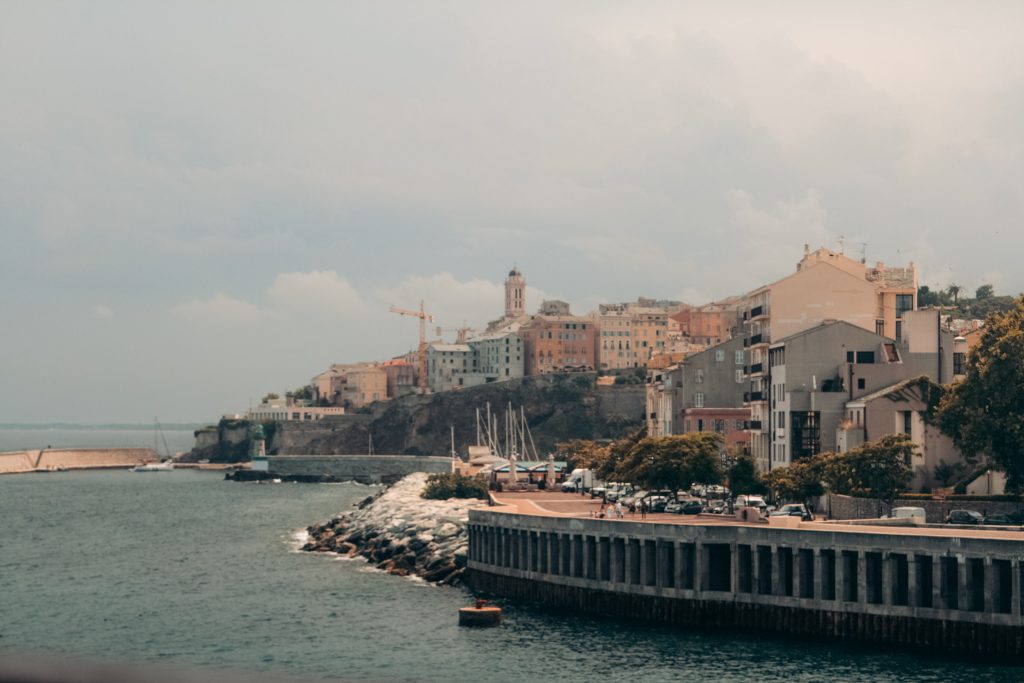
Now, let’s talk food. Bastia is a fantastic place to dive into Corsican flavors – think about hazelnuts, brocciu cheese, and cured meats spiced with maquis herbs. I am already dreaming of doing a food tour here myself the next time I visit. For me, food is one of the best ways to understand a culture. And if you end up booking one, don’t forget to send me a few photos as I would love to see what you tried!
One thing I would skip in Bastia? The beaches. Not because they are not beautiful, but because I think your time here is better spent digging into the city’s cultural and historical side, so save the beach days for Corsica’s more epic coasts.
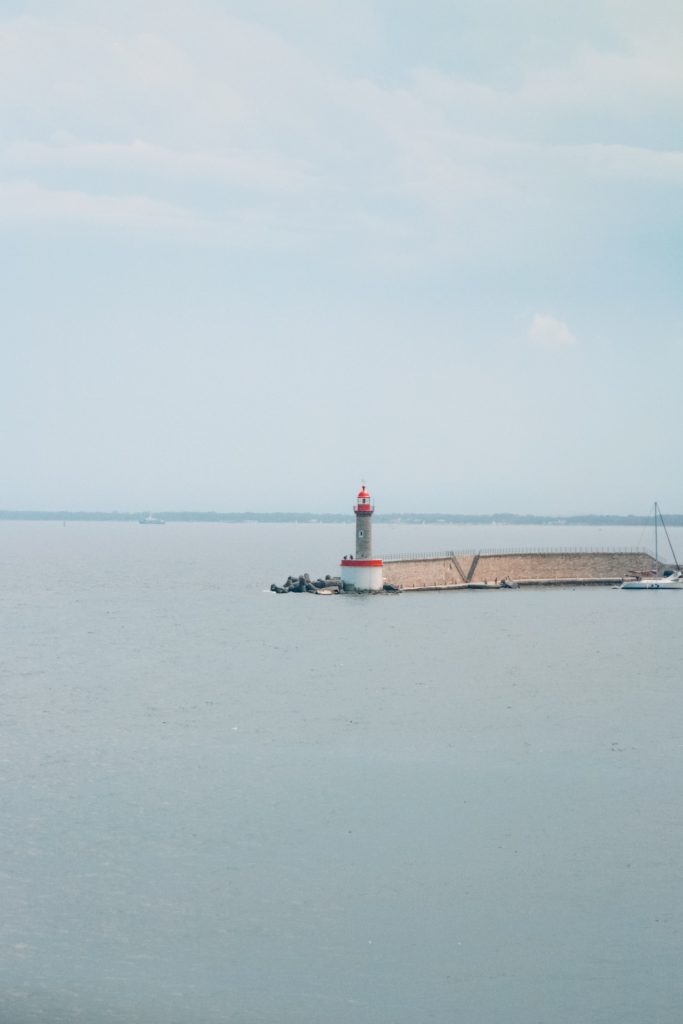
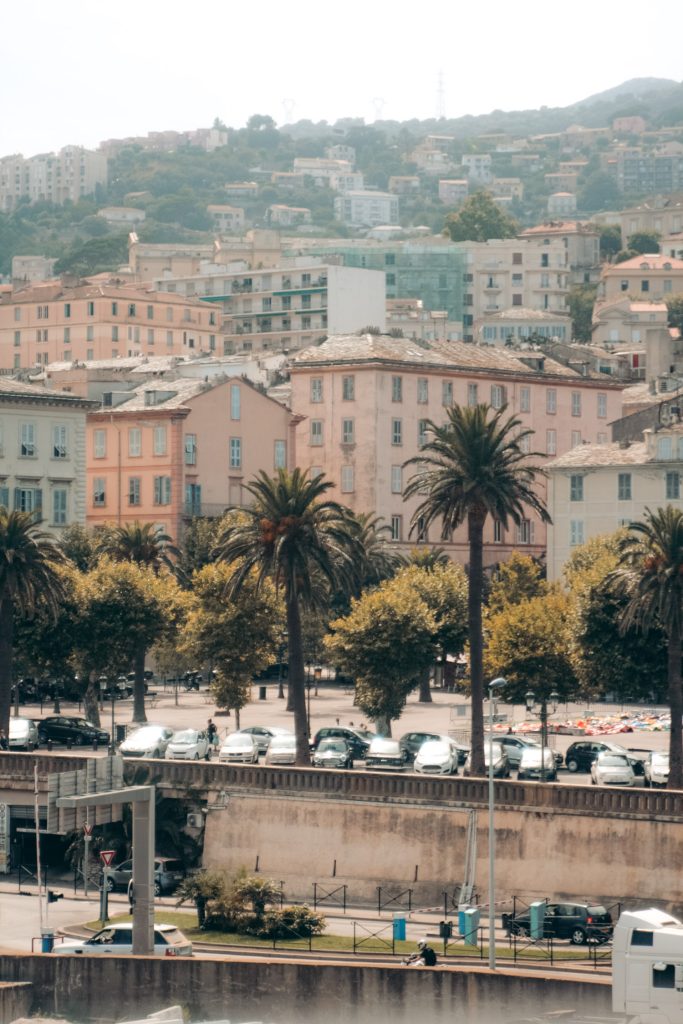
Where to Stay in Bastia
Tucked right in the heart of Bastia, Hôtel Des Gouverneurs not only offers gorgeous views of the ocean, but has classically designed rooms and a pool as well. You can end your stay in Corsica here in style and with a massage at their wellness. Another great pick if you want to stay central is Babbu Hotel, which features a beautiful, timeless interior. If you are after a bit more peace and quiet, though, Alivi is a lovely option. Located just outside the city, it overlooks the sea and comes with a stunning pool for a relaxing stay.

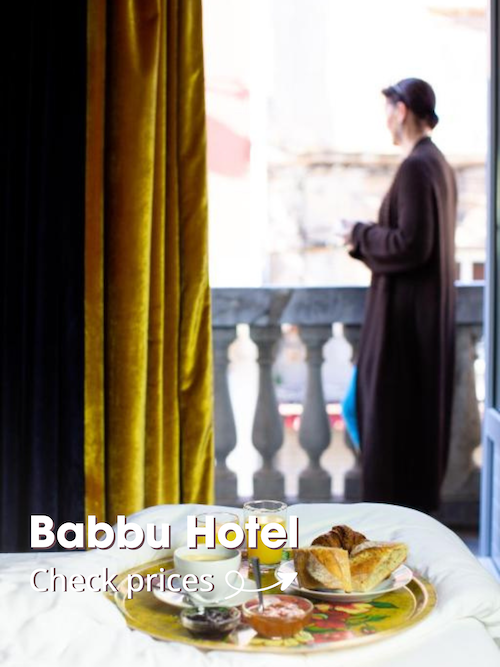
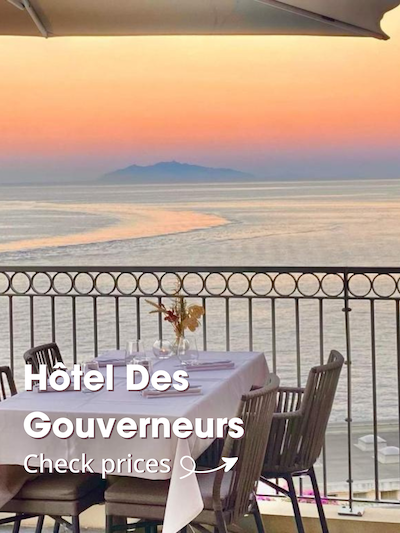
Final Thoughts on This 3 Week Corsica Itinerary
Congratulations for making it all the way to the end! This three-week Corsica itinerary shows you all of the highlights, hidden gems and best experiences on the island, while catering to many types of travelers. Granted, this itinerary includes a lot of moving around, which is why I would recommend picking a couple of these hotels and doing daytrips from there.
If you want to dive a little deeper into the best things to do on Corsica, then read my ultimate Corsica wine tasting guide, or focus on East Corsica with this guide. There is so much to do that one trip will never be enough to discover all of Corsica’s facets, but with these tips, I hope you get a long way. If you would like to stay up to date with all of my travel guides, then sign up to my newsletter, or follow me on Instagram.




